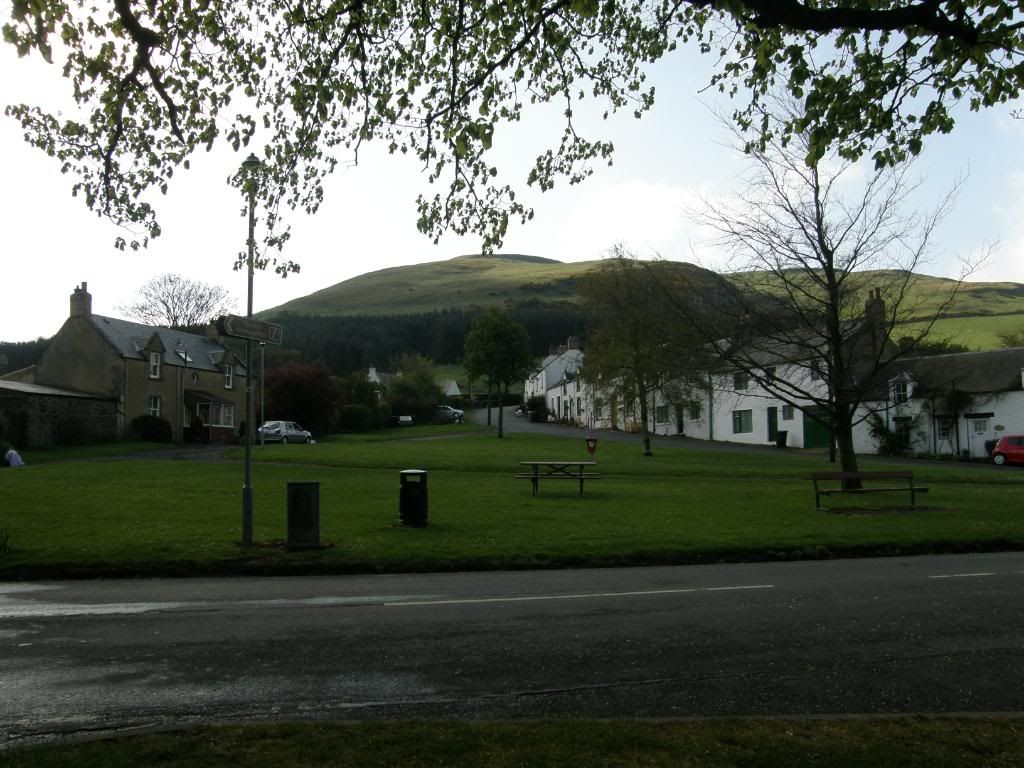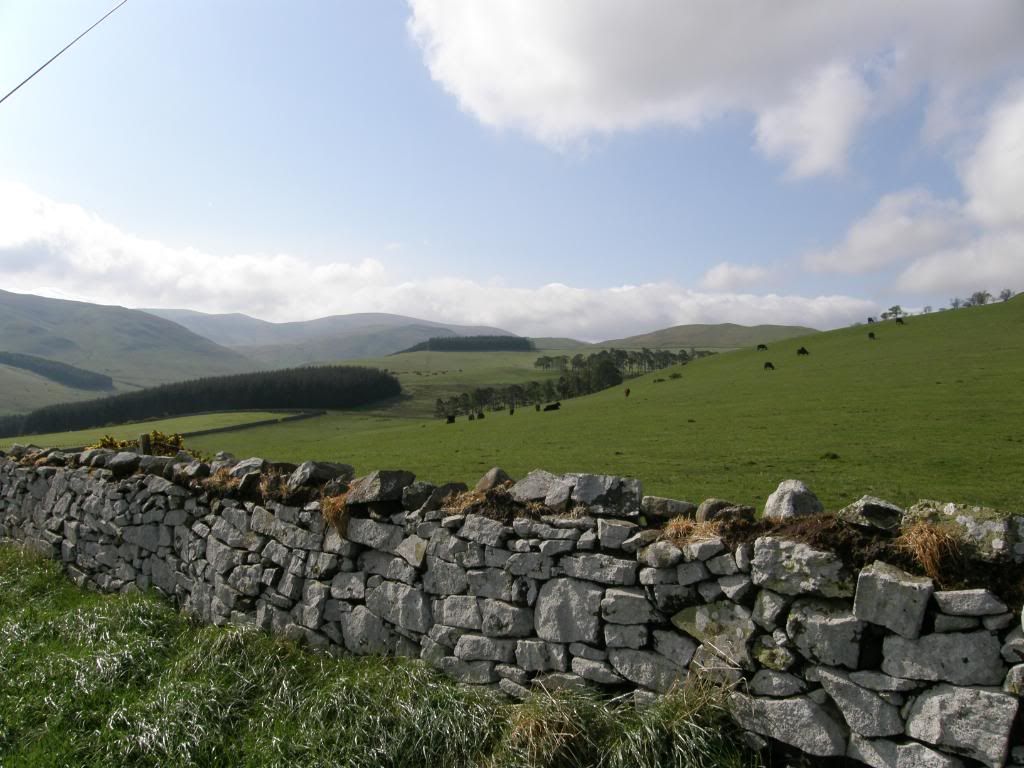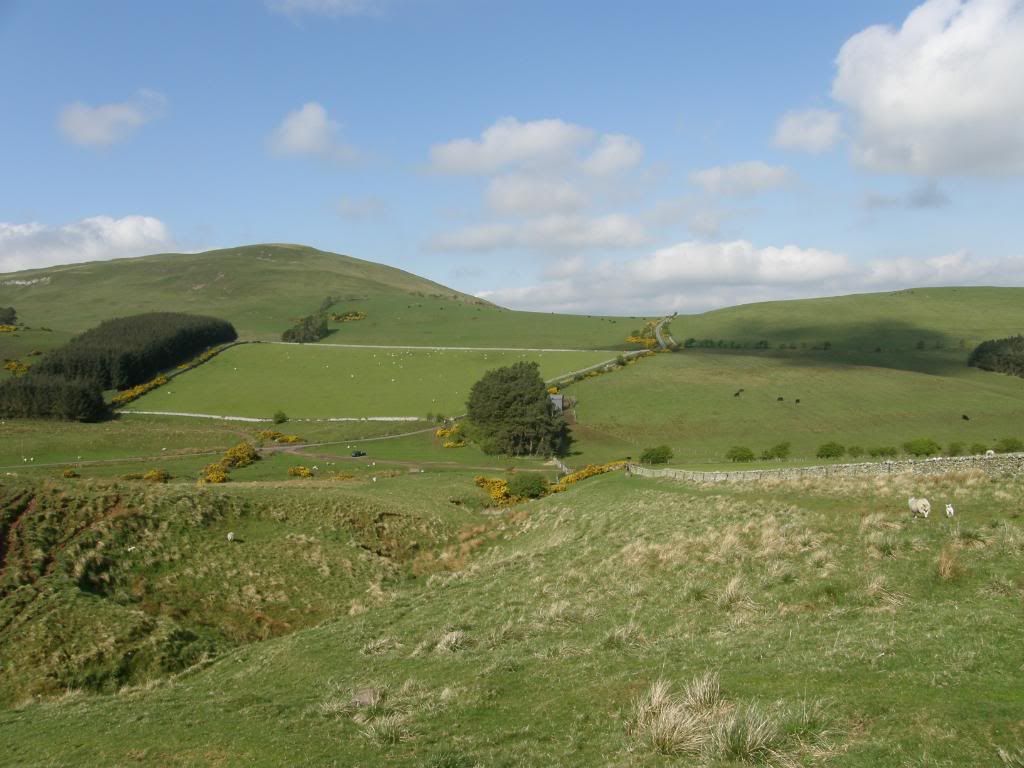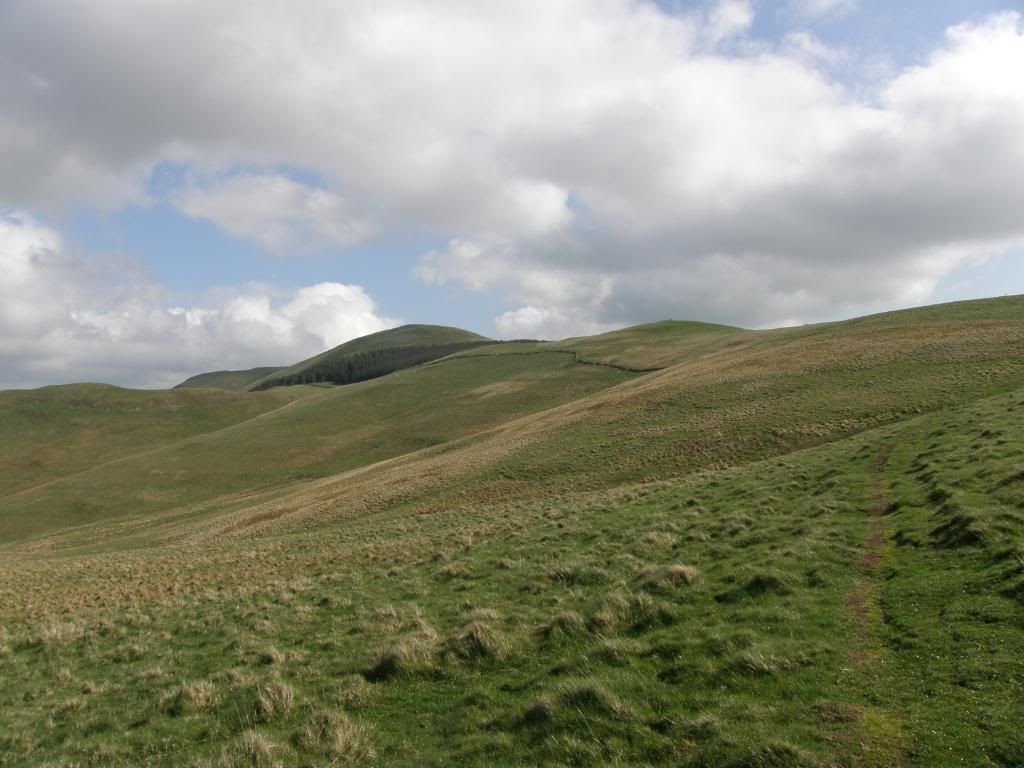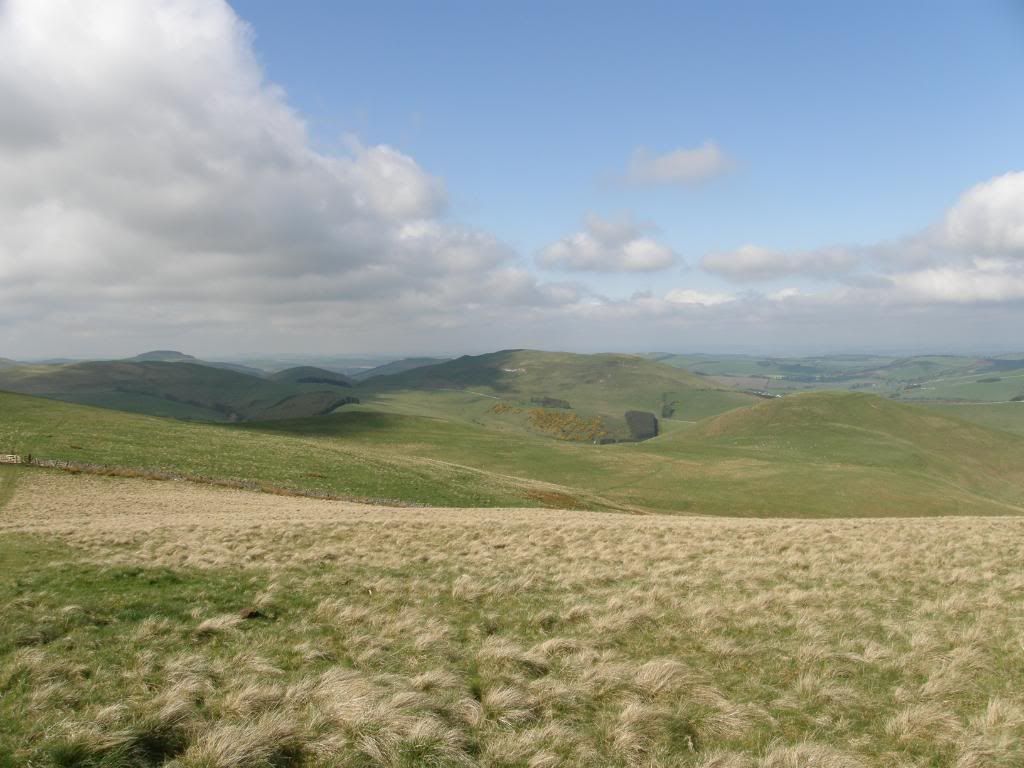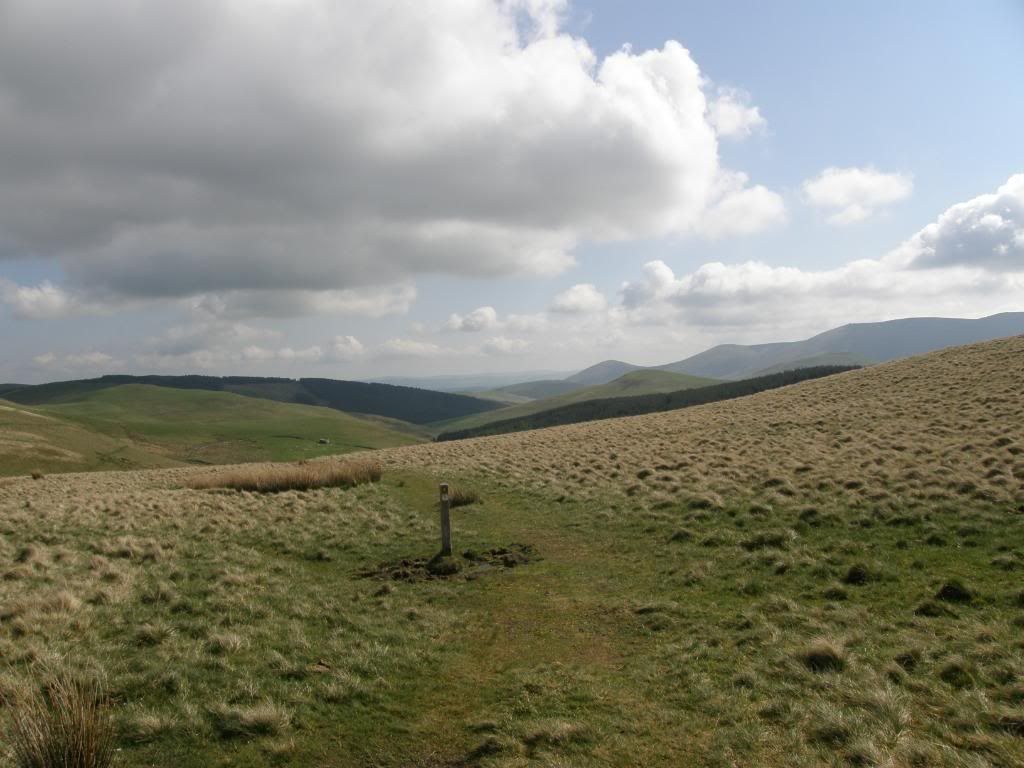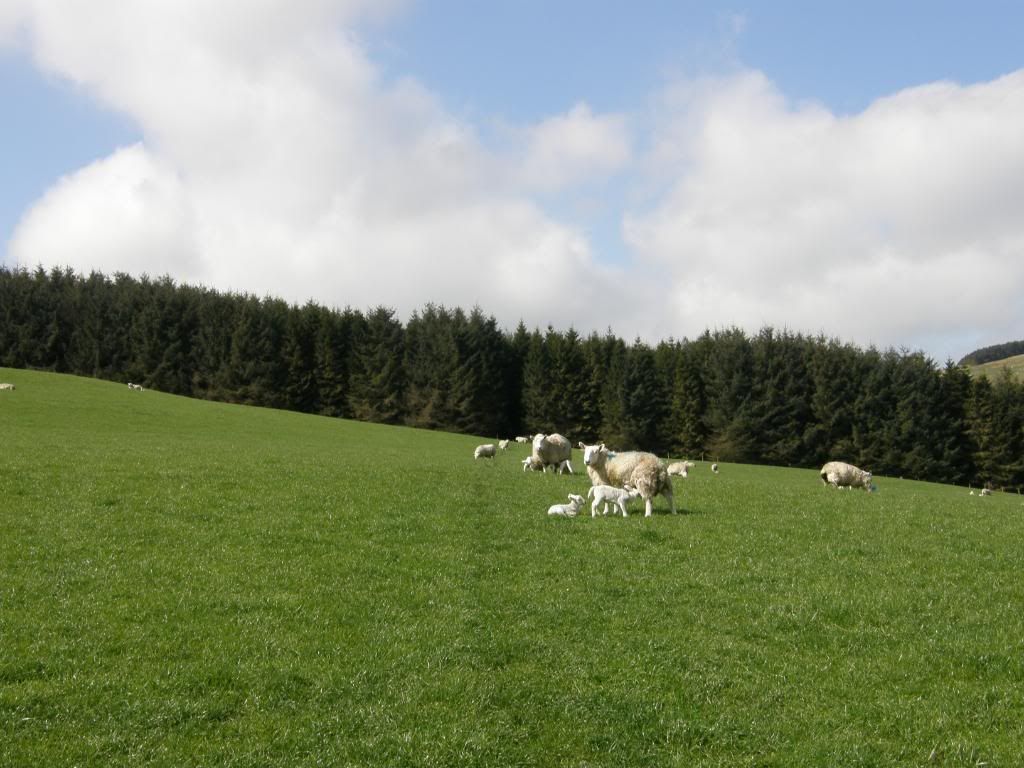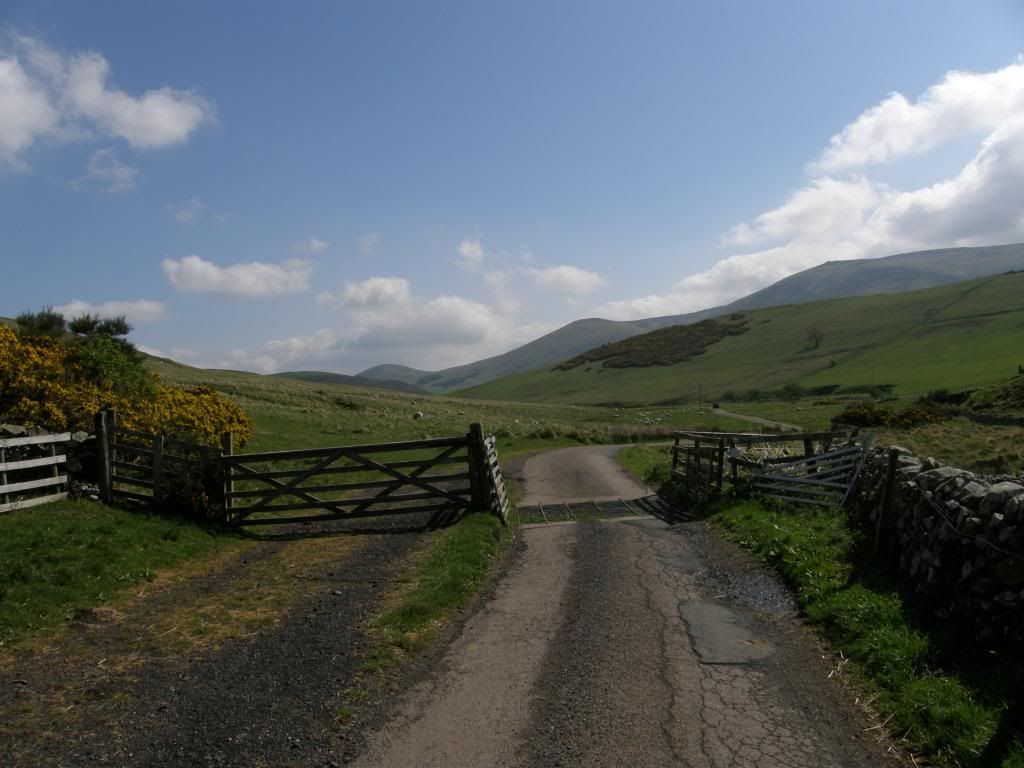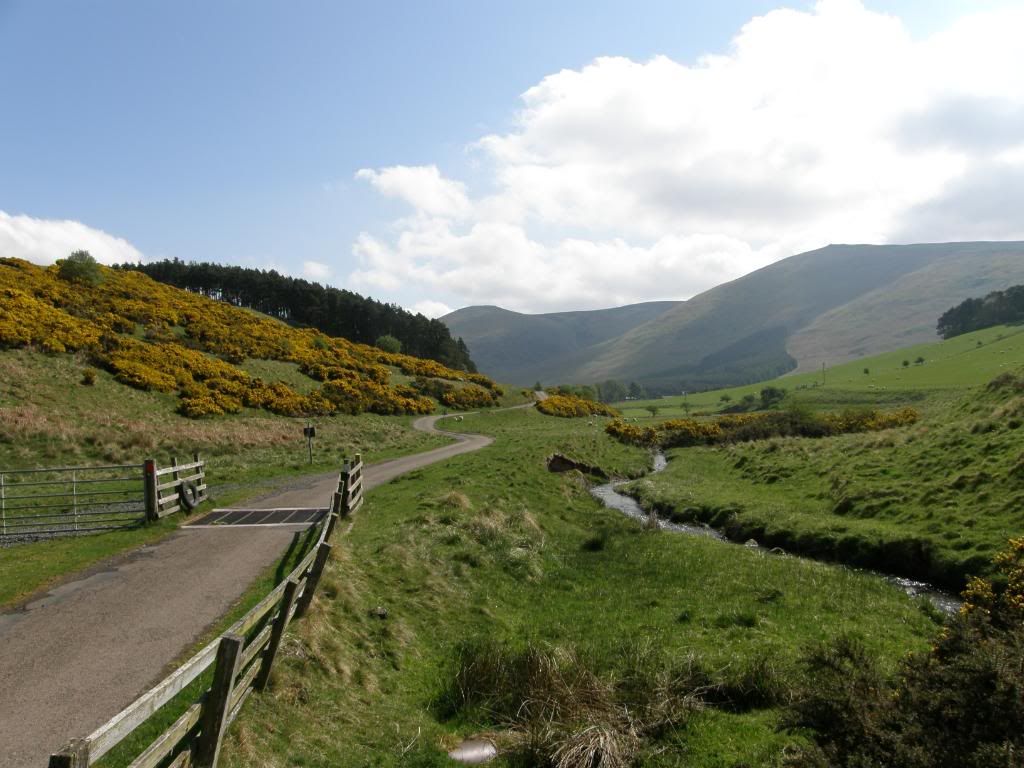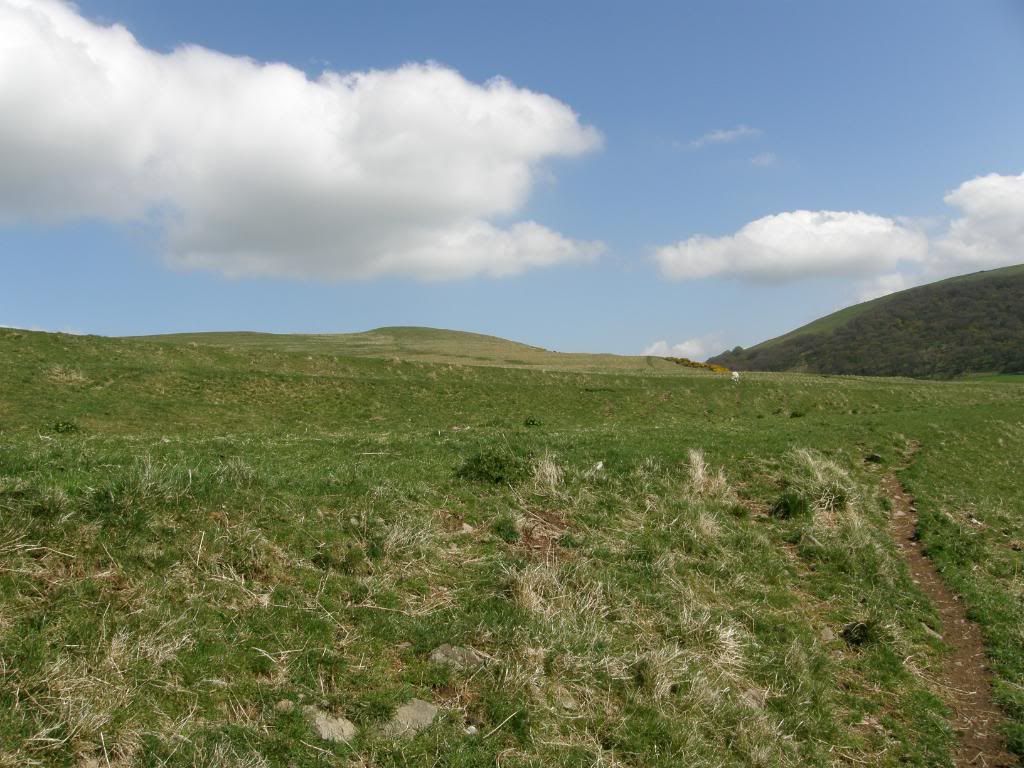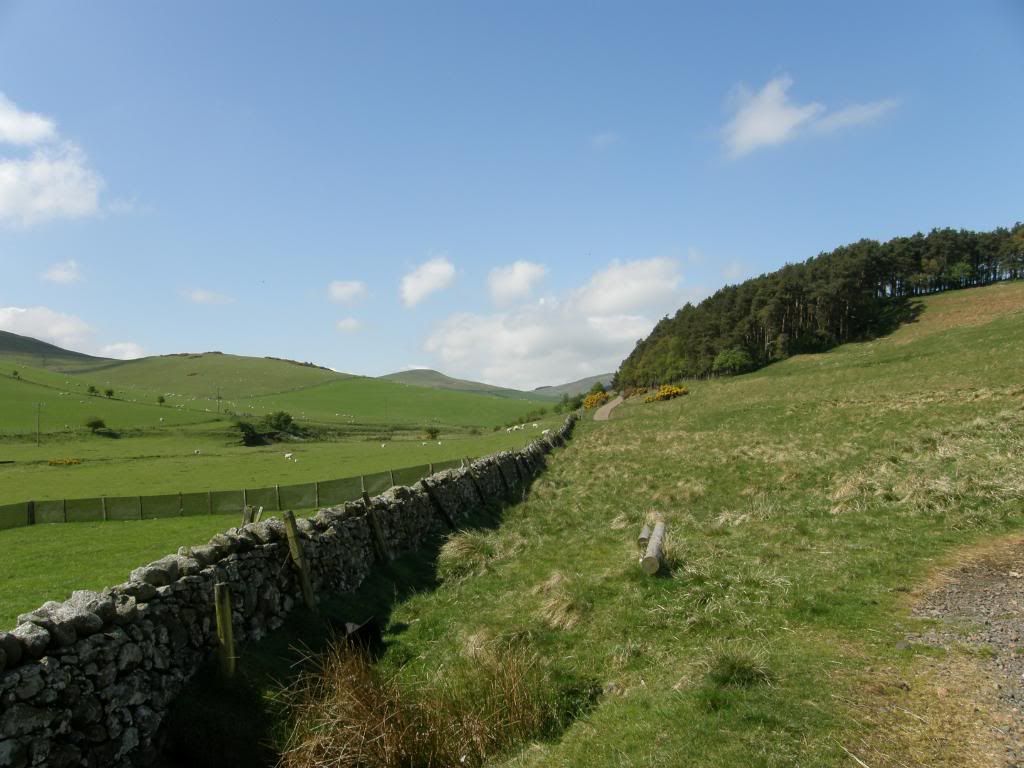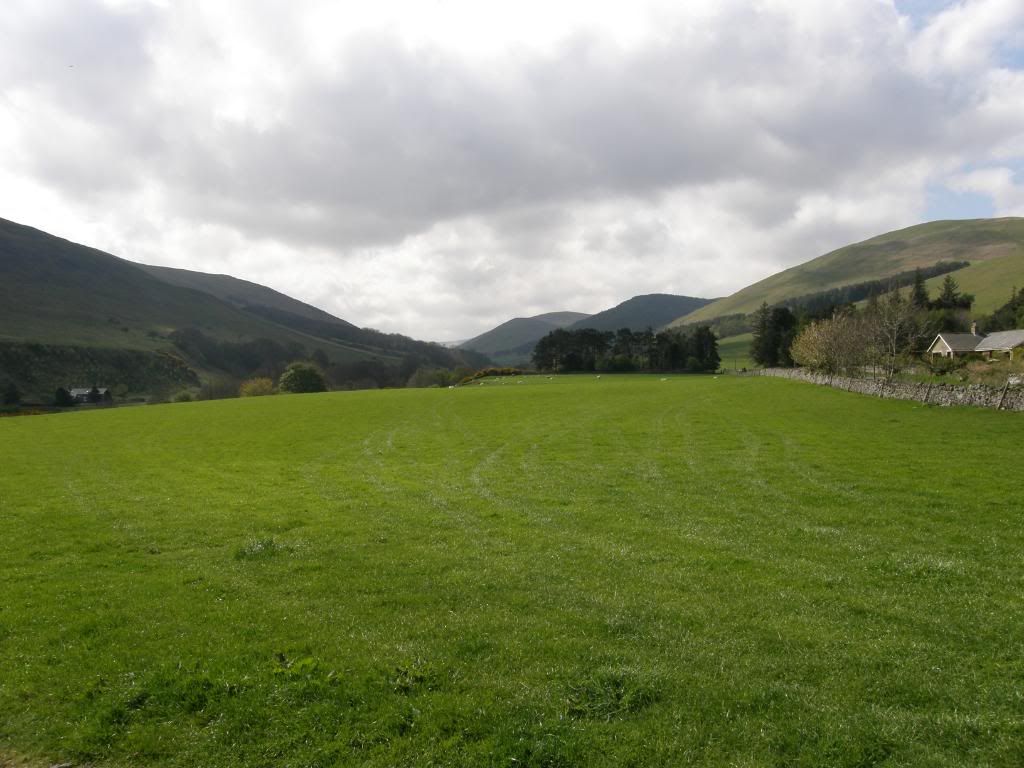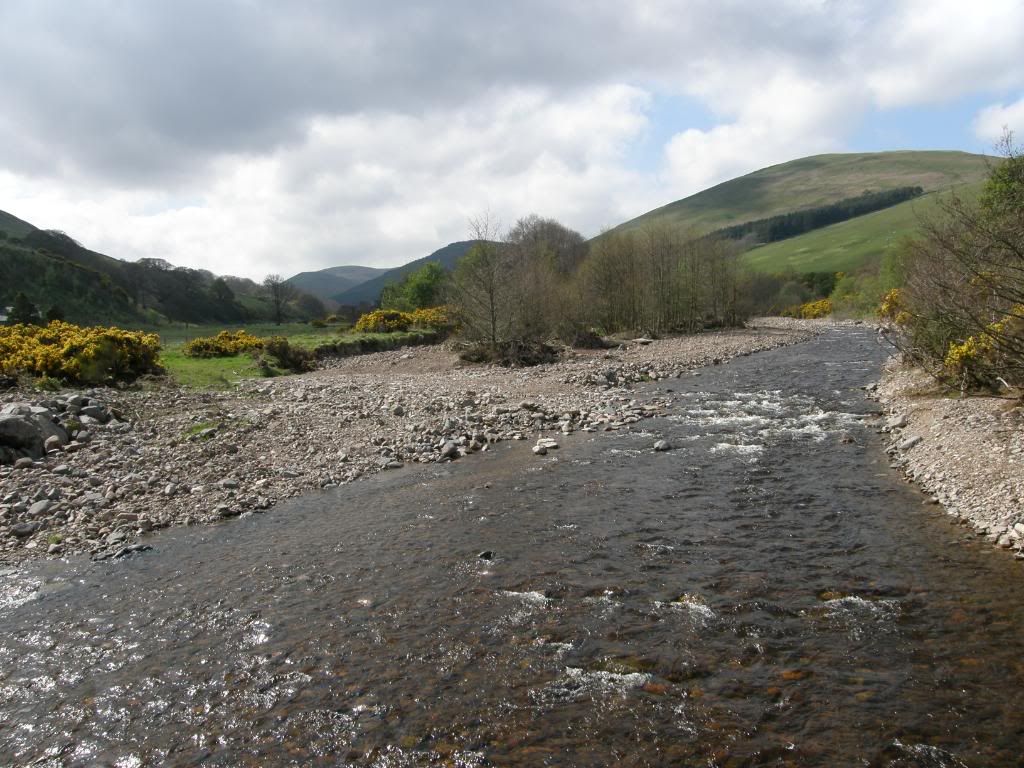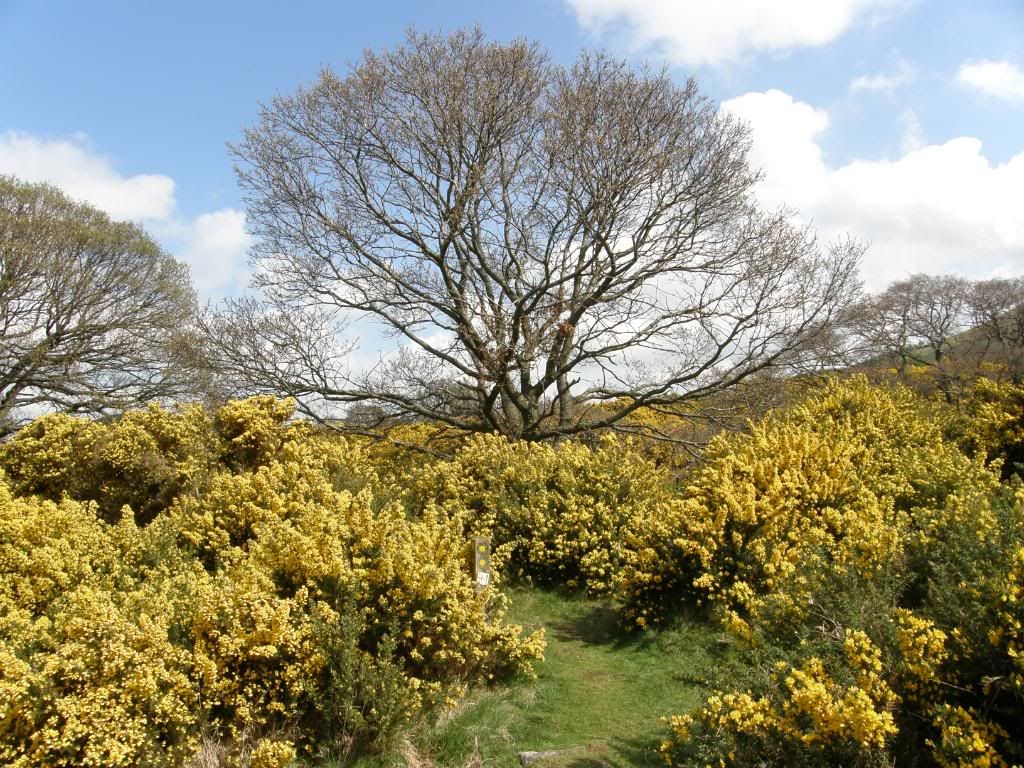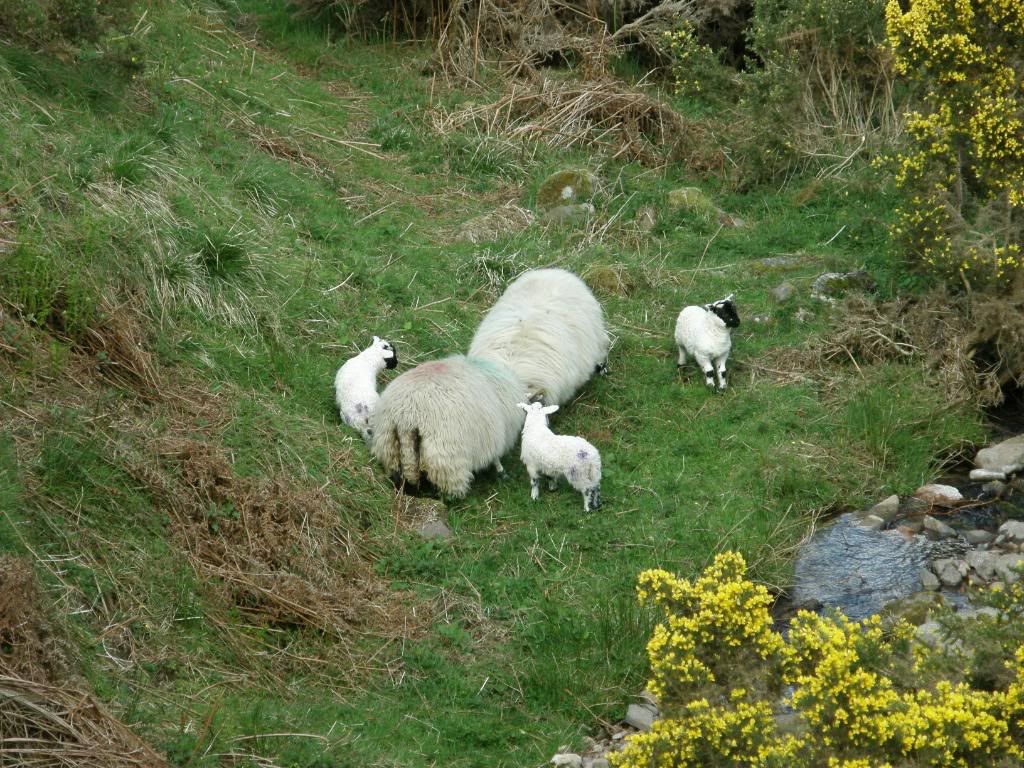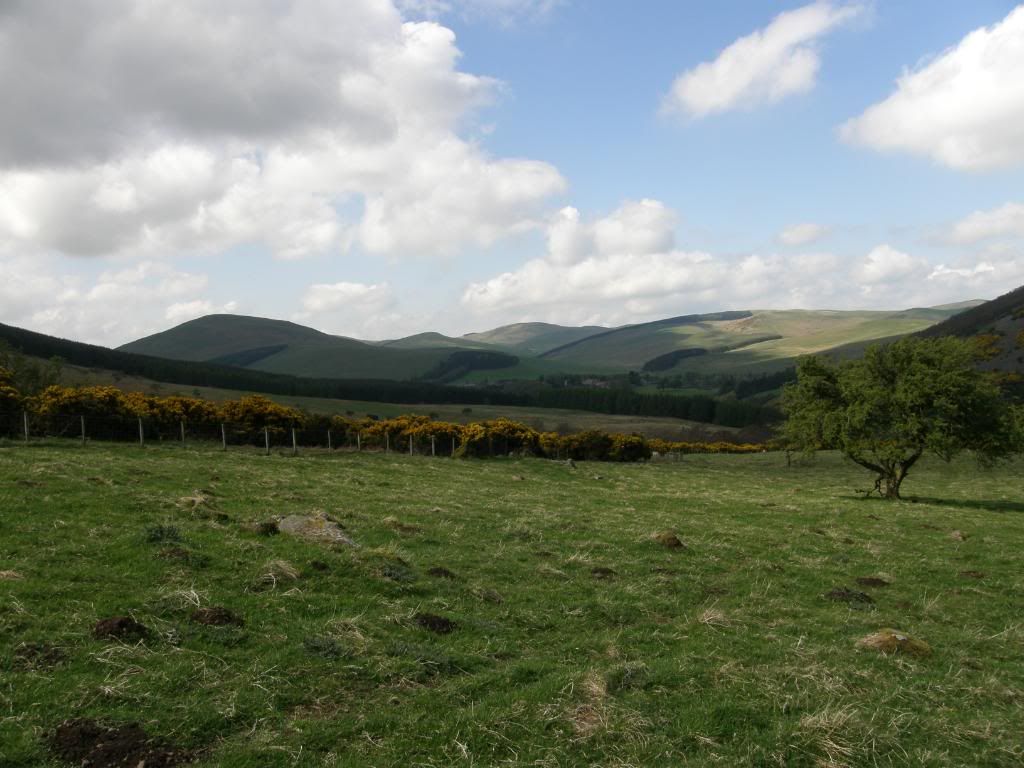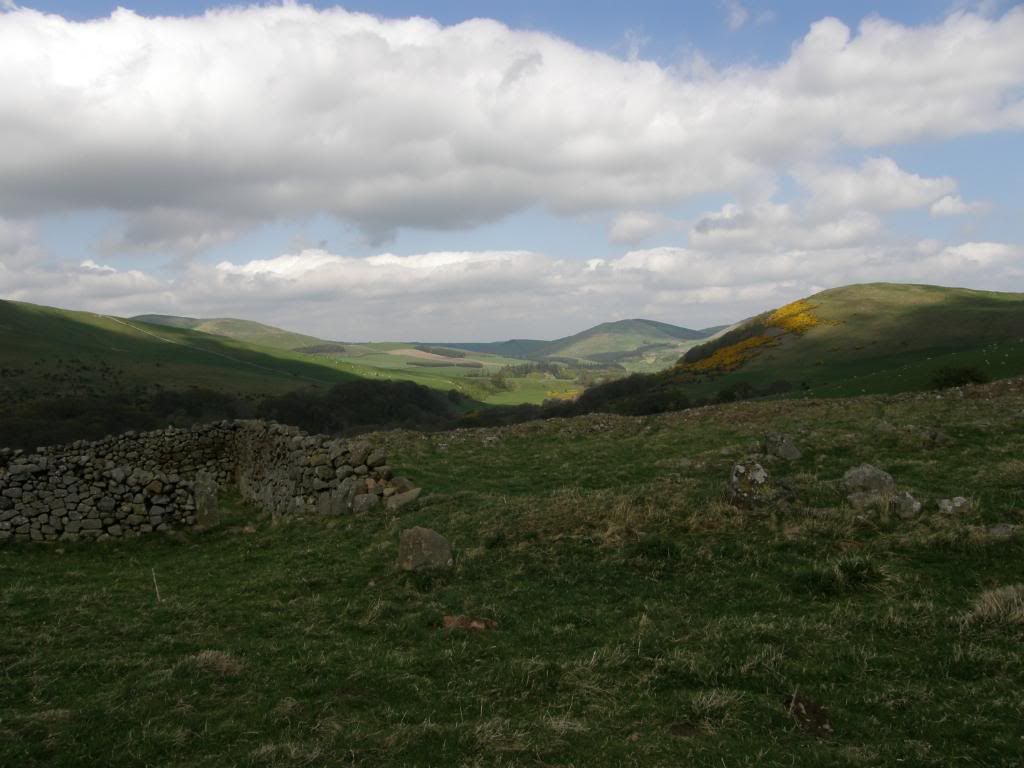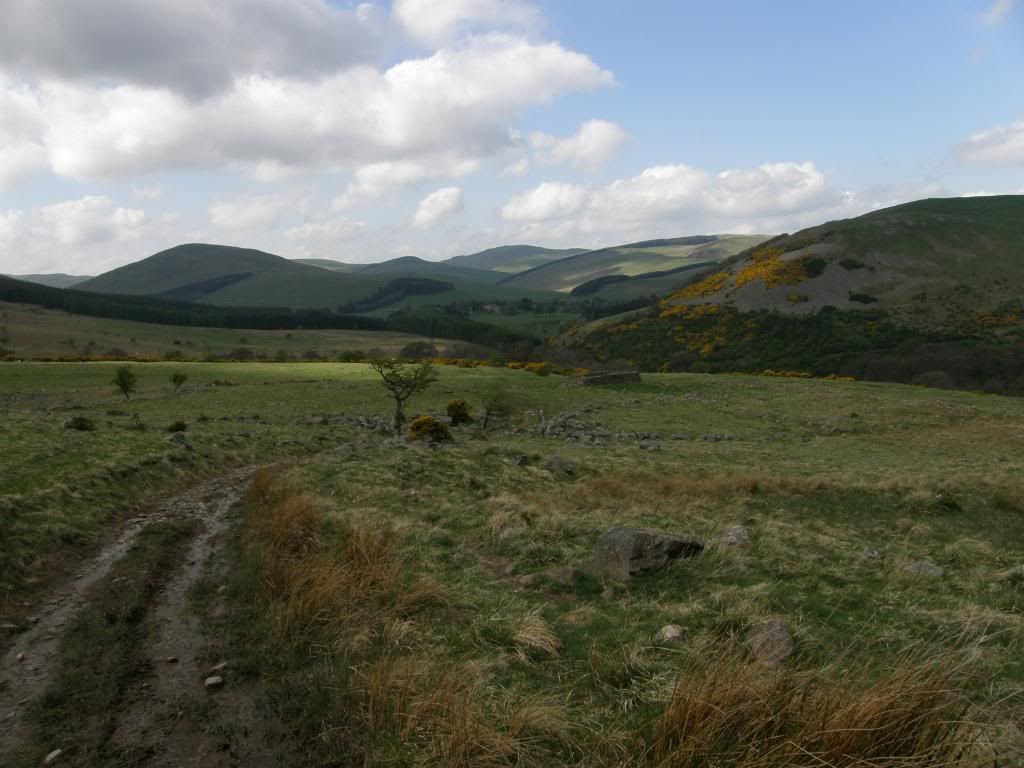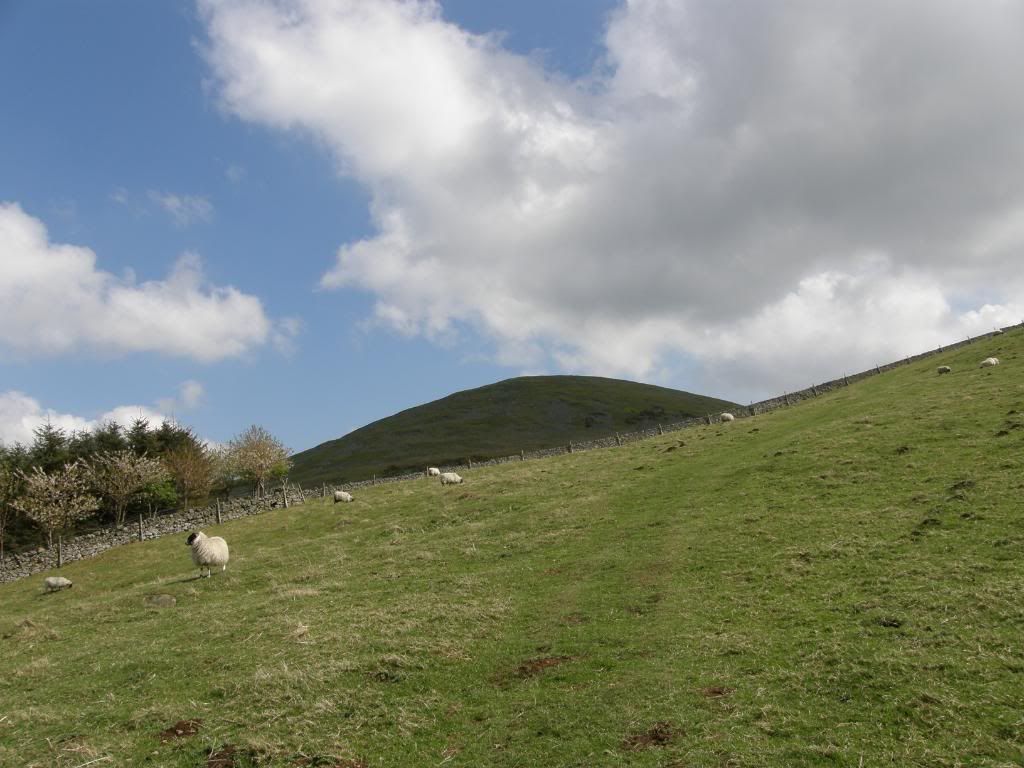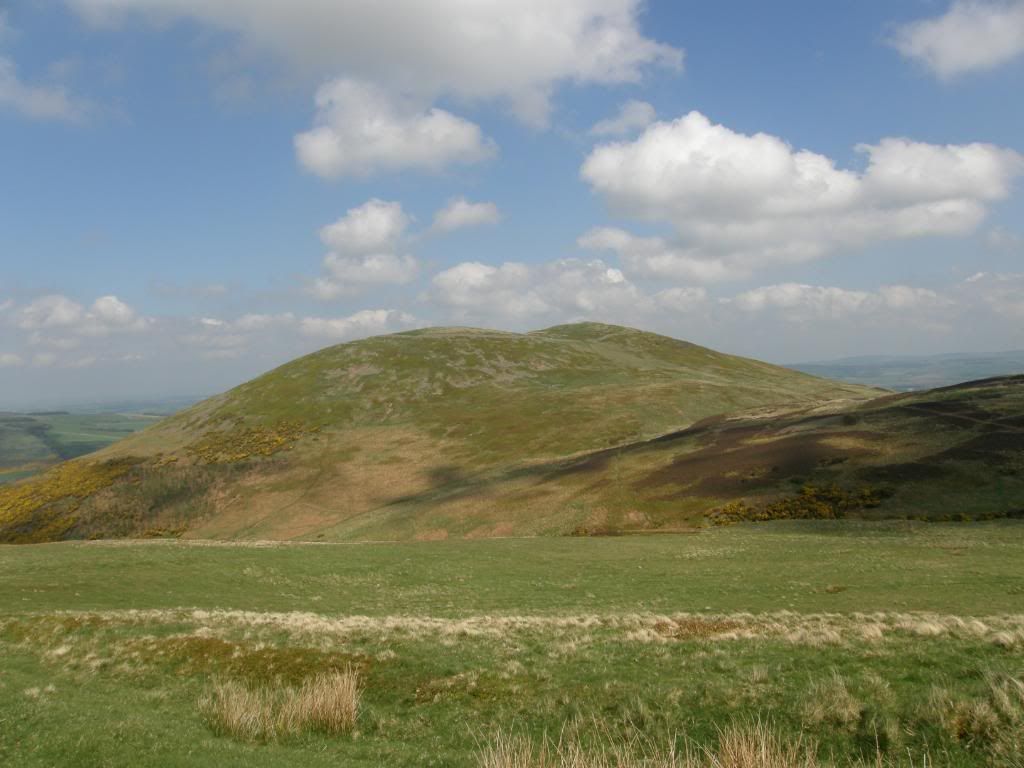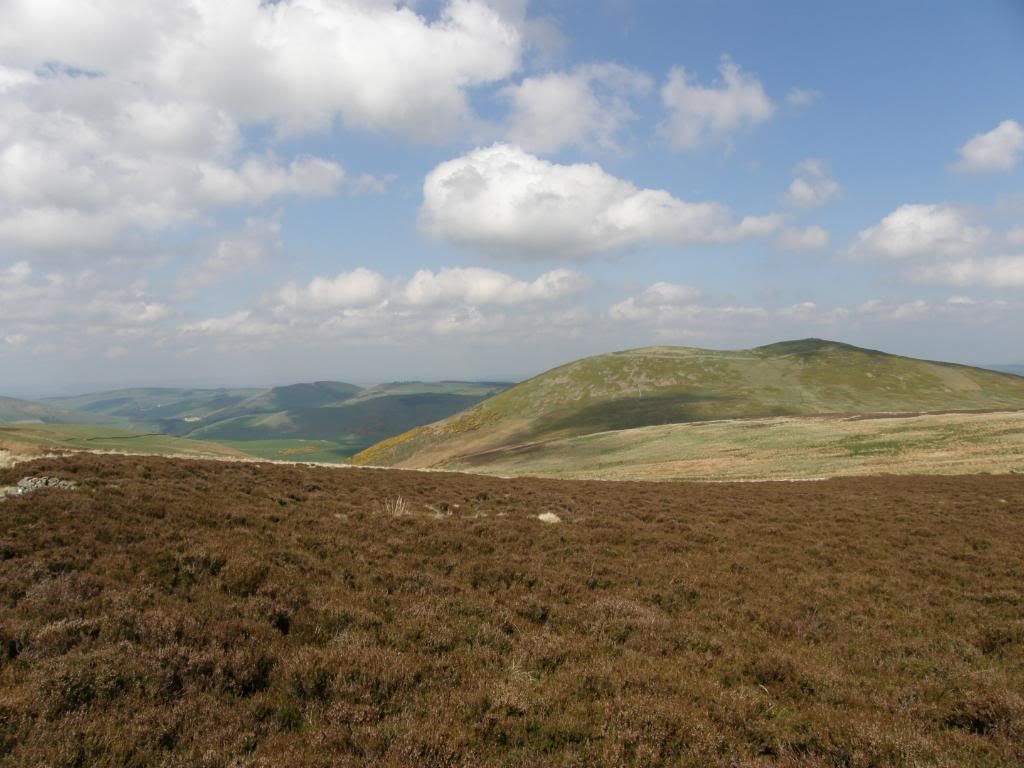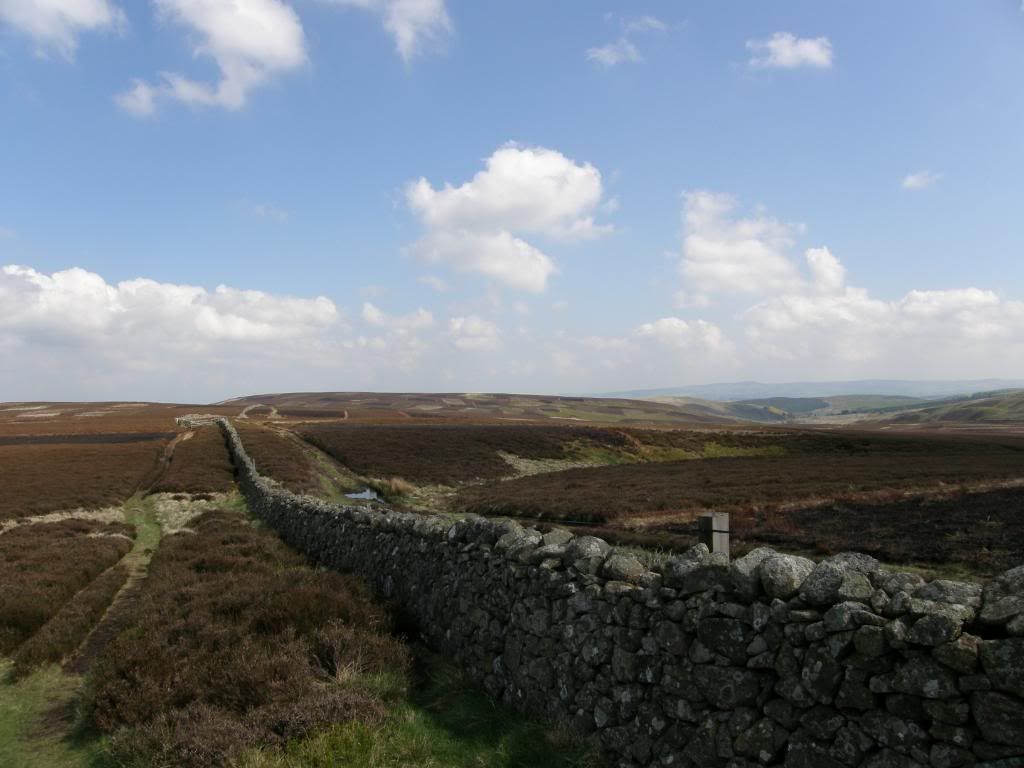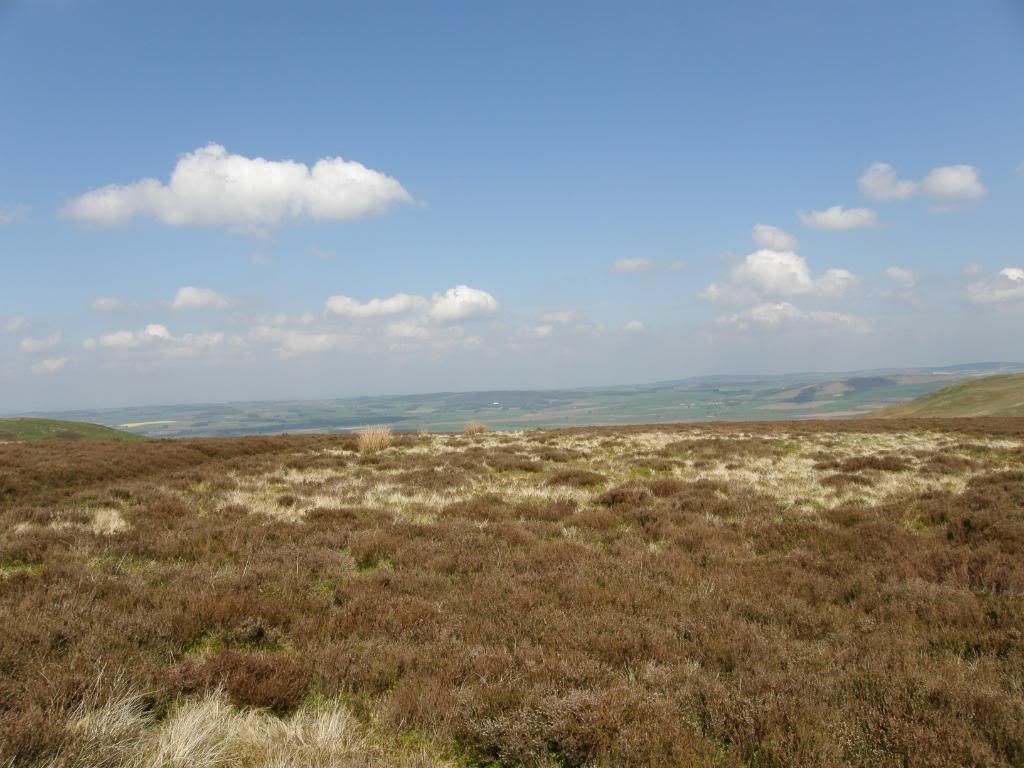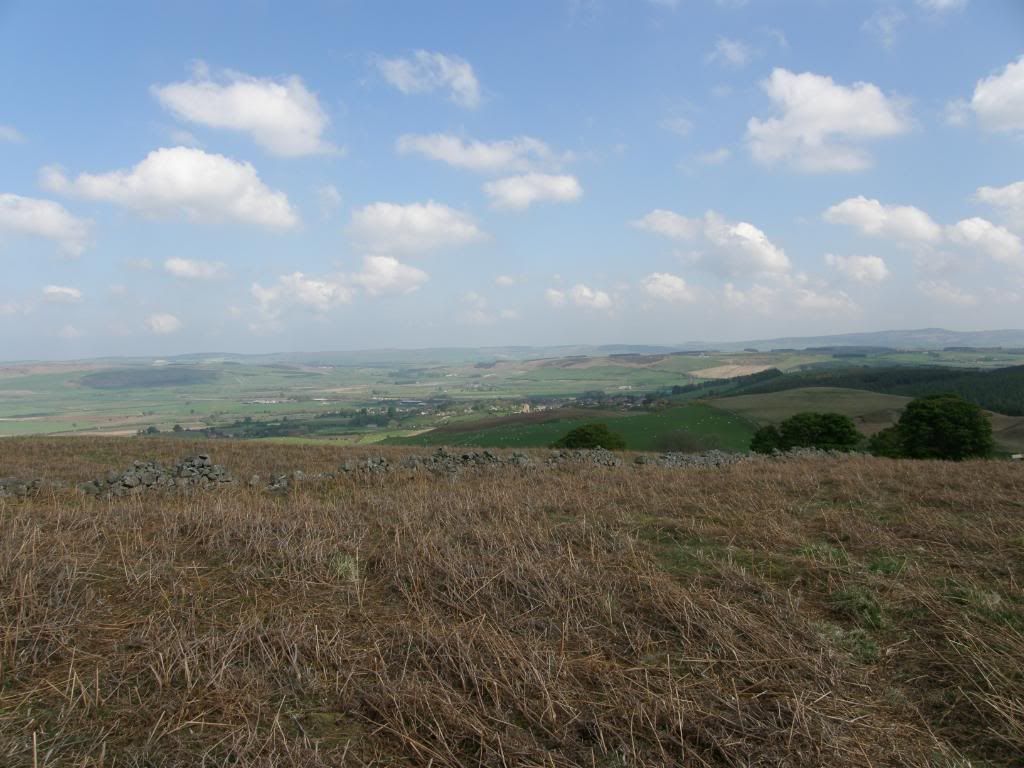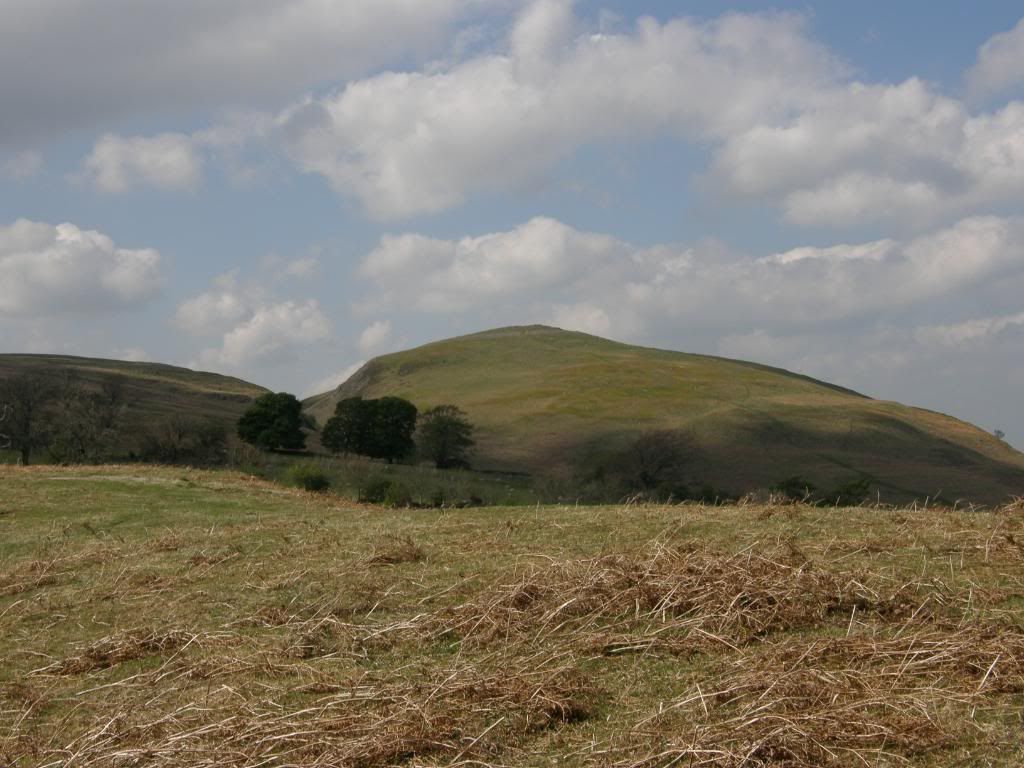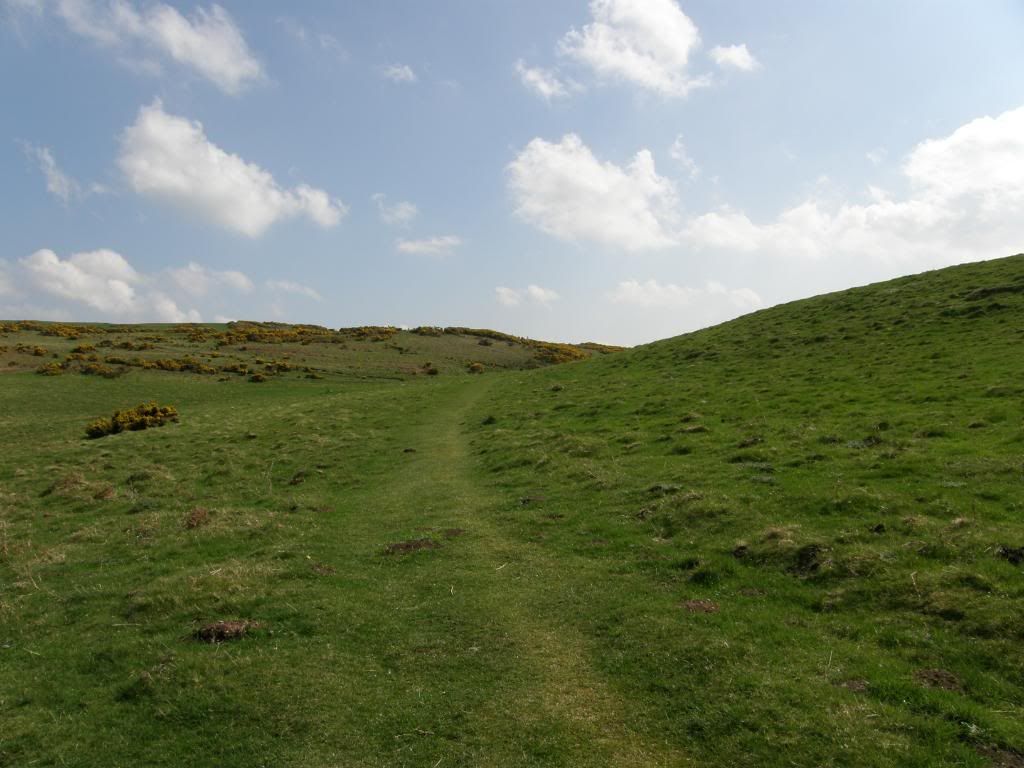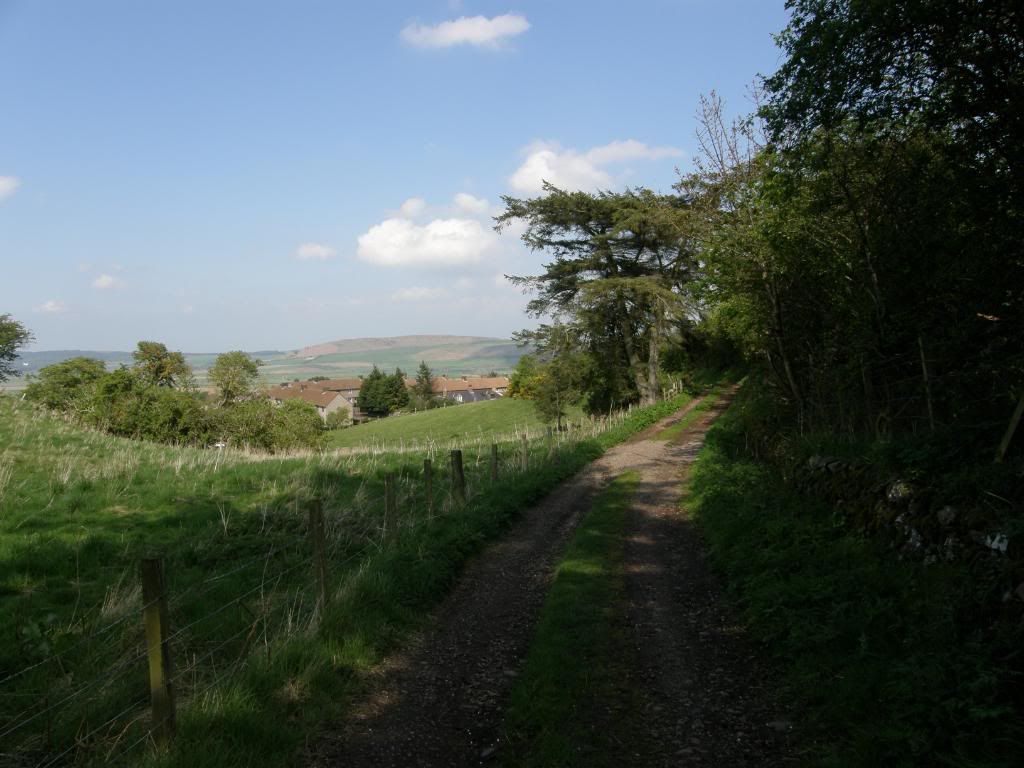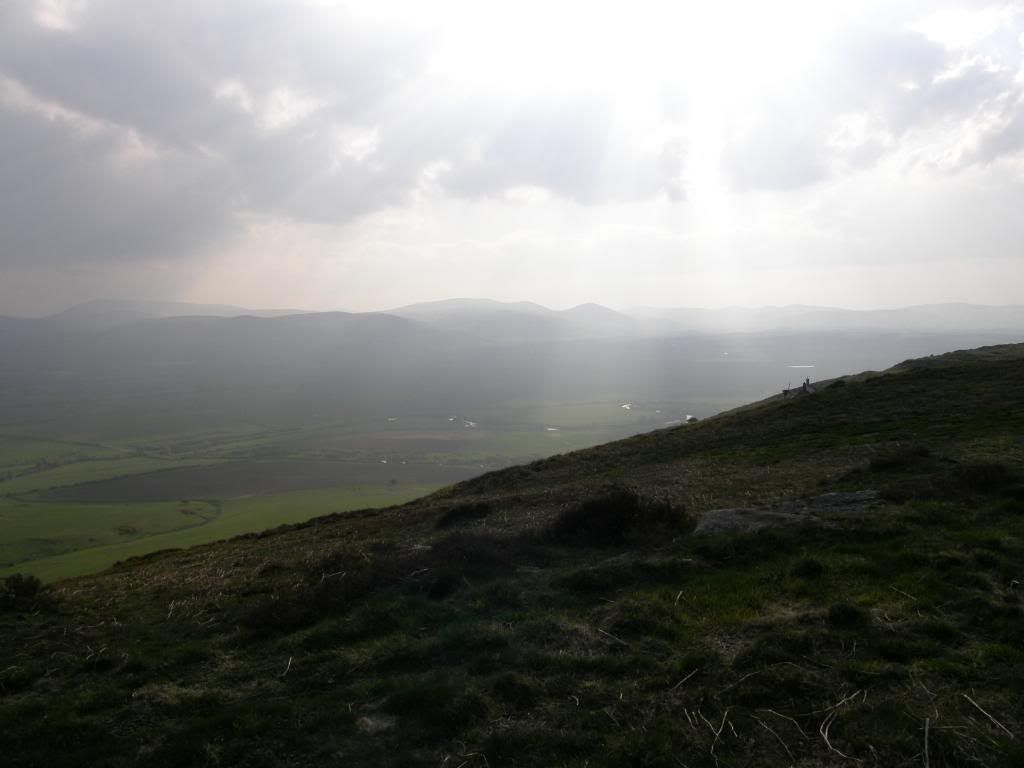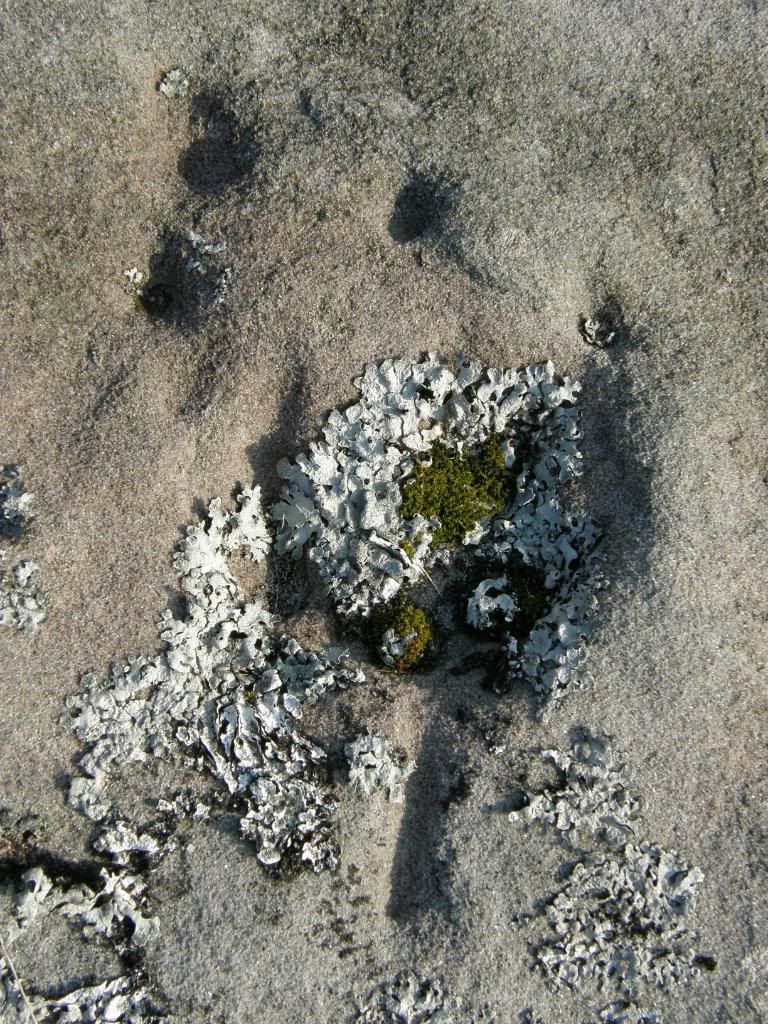Day Four: 30th April 2009.
Weather: Dull weather, but warm with an odd patch of sun
Wooler to Lindisfarne Castle: 20 miles (1/2 mile diversion – oops)
We stayed over at a lovely B&B run by a young lady who does a lot of horse riding. Breakfast was good and the whole stay was very relaxing. I had already walked out of Wooler on a previous walk so I knew the way out of town onto the correct route. The weather forecast was not great so I ditched the brolly, and as it was a little cool today so I decided on wearing my merino wool base layers for warmth and lightness. I also donned lightweight shorts so I had somewhere to store my fruit pastilles and GPS (I’ve got my priorities right) and then donned overtrousers so I didn’t look like a complete t^@t. By the time I had walked a few miles I knew that was a mistake as I was rather warm and decided to find somewhere to remove my leggings. After watching the road for a few minutes nothing had passed me by and I slipped into a gated entrance to disrobe. Now as you know as soon as I had taken off my overtrousers, shorts, and leggings the traffic started to flow. I don’t know who was more surprised at seeing someone down a small country lane – me, standing in his underwear, looking very suspicious, or the drivers of various cars, tractors etc. I think the nearby sheep were a little worried though – "baaa that’s the farmer’s job". I left Wooler early by my standards at 08:30 as I didn’t want to miss the tide over to Lindisfarne or get stranded in one of the refuges along the way. My actual average speed today (as measured by my GPS) was 3mph compared to the 2.5mph I had averaged over the previous 3 days. That was probably due to the need to beat the tide but also gives some indication of the terrain today – lots of roads, tracks, good field paths and only a few low hills to negotiate. As it was I easily made the Island B&B in plenty of time to enable me to visit Lindisfarne Castle.

Not a Roman road – just uphill to Weetwood Moor
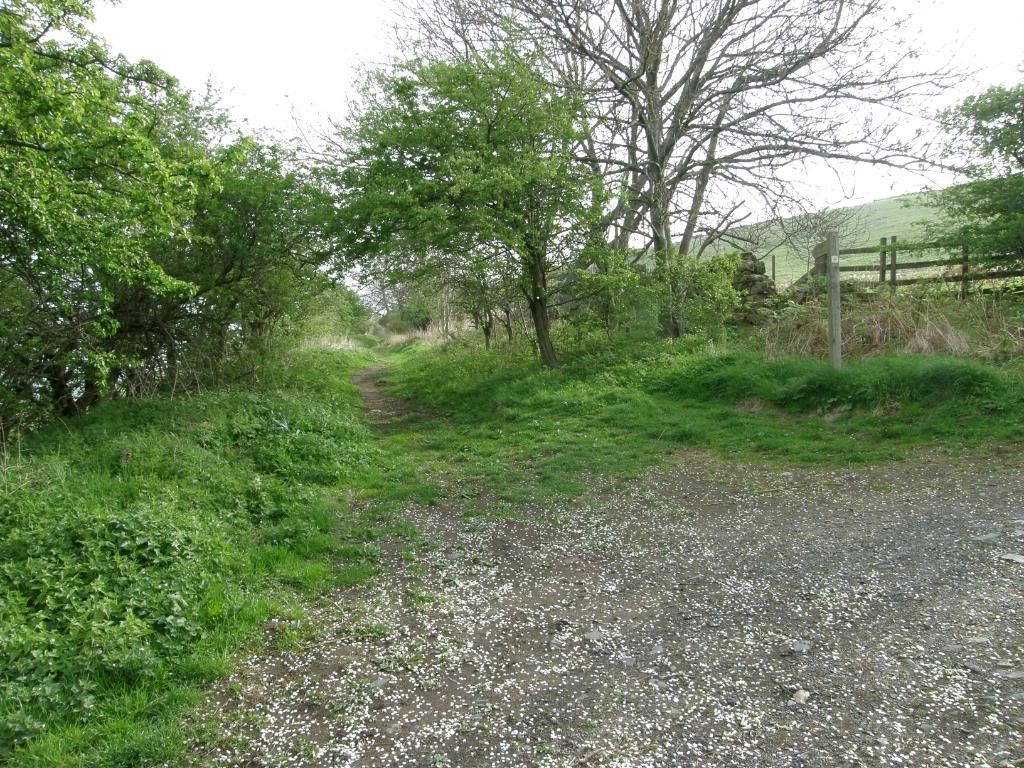
All uphill to start the day
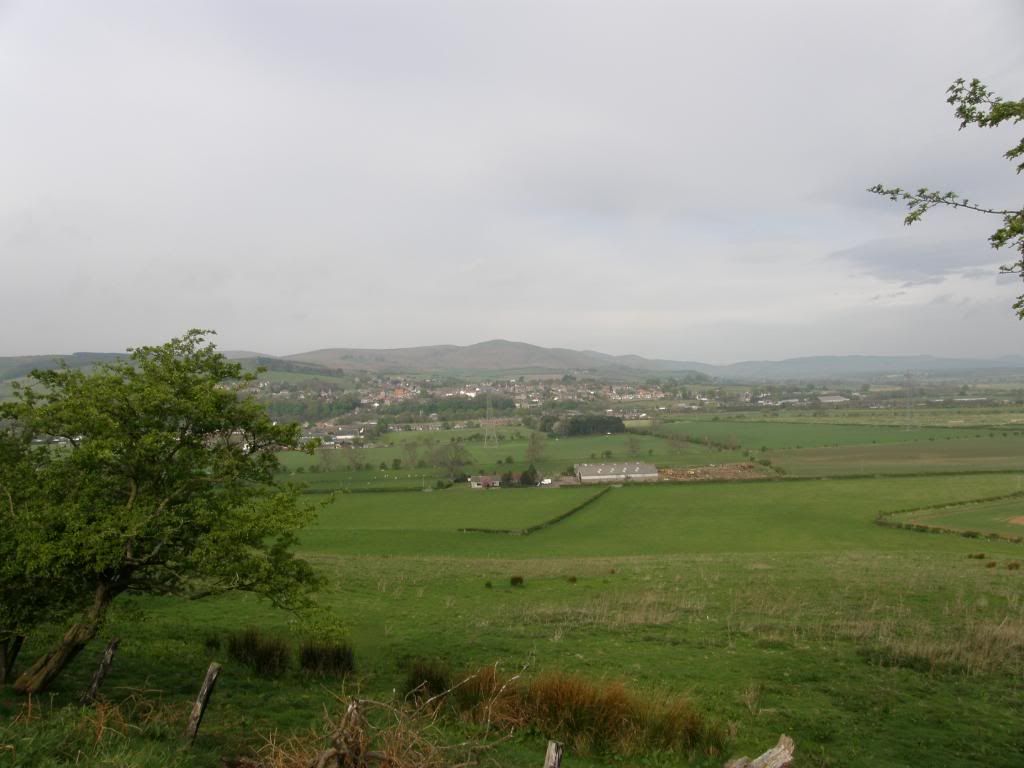
Looking back down to Wooler with Hambleton Hill behind
The initial route out of Wooler is straightforward enough and I was soon making headway up a long lane past the local school, and up a steady incline towards Weetwood Moor. As usual my self control let me down badly and I had munched my way through my last packet of fruit pastilles before I had walked a mile. It was a bit like Watership Down up on the moors as the hillside was riddled full of rabbit holes, with a few cheeky young ones nibbling away on the grass as I passed by. Once on top of Weetwood Moor there were good views all around, over to Doddington Moor and Buttony, and behind me back to Wooler and the Cheviots beyond. I passed by a few old earthworks and had a quick scout around for some more Cup and Ring markings, but didn’t spot any close by the path. There were plenty of jumbles of stone lying around and the path was lovely springy grass and was made to stride along at a fair old lick.

Nearly at the end of the moor – some more earthworks
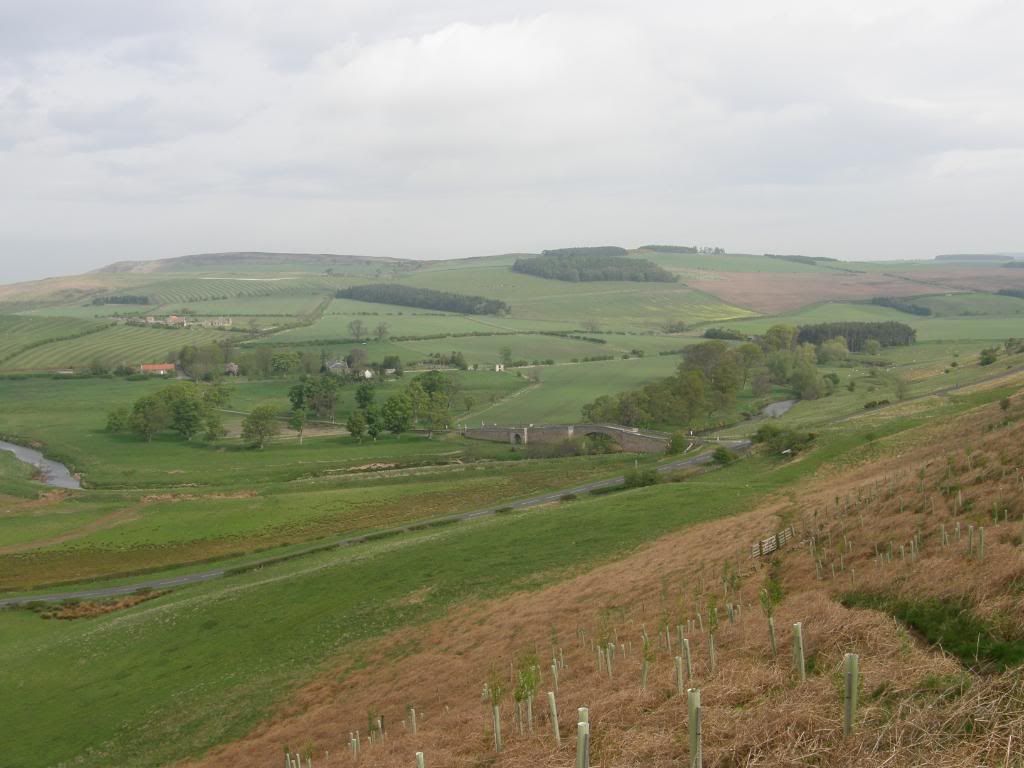
Down to Weetwood Bridge with Buttony and Doddington Moor above

Back across the floodplain to Wooler
As I started to drop down off the top of the moor to Weetwood Bridge, I disturbed a Red Deer that was grazing in a newly planted bit of forestry, but all I managed was a blurry image – story of the week as far as wildlife is concerned. From my position high up on the moor I realised how prominent the rock art over the other side of the valley is in relation to the Cheviots – in your face as it were. As I approached Weetwood Bridge I was surprised at how big the bridge is over what is a relatively small river. This bridge was one of several large bridges I saw today along this river, and I assume that there was once a huge estate that spread along this beautiful border country. The bridge dates from the 16th century and has been saved by English Heritage – it was suffering from leaning walls and was repaired with a lot of cement. I noticed that there are a couple of plinths that must have housed statues at one time at both sides of the parapets. The ends of the bridge are marked by two upturned ice-cream cones – a splendid sight on a hot summers day, and you can see the tooling marks made by the original masons so many centuries ago. The masonry still leans over at a jaunty angle, and I took the time to turn and look back across the floodplain towards the hills above Wooler, a little weighed down in low cloud but still looking inviting, and away to my right on top of Weetwood Moor the earthworks of an iron age fort could clearly be seen from below (I copied this last bit from my walk at Wooler – so if it looks familiar you know why). I continued up the lanes enjoying the route I had walked before and stopped in a gateway to doff pants etc.
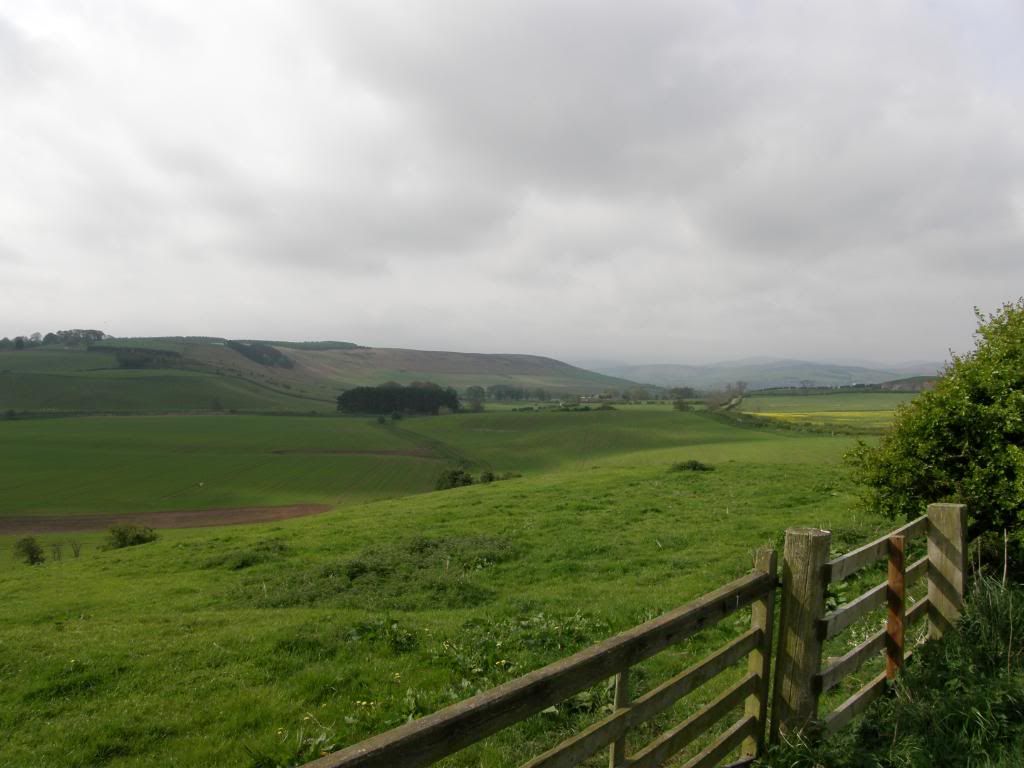
Weetwood Moor and pants off here – phew
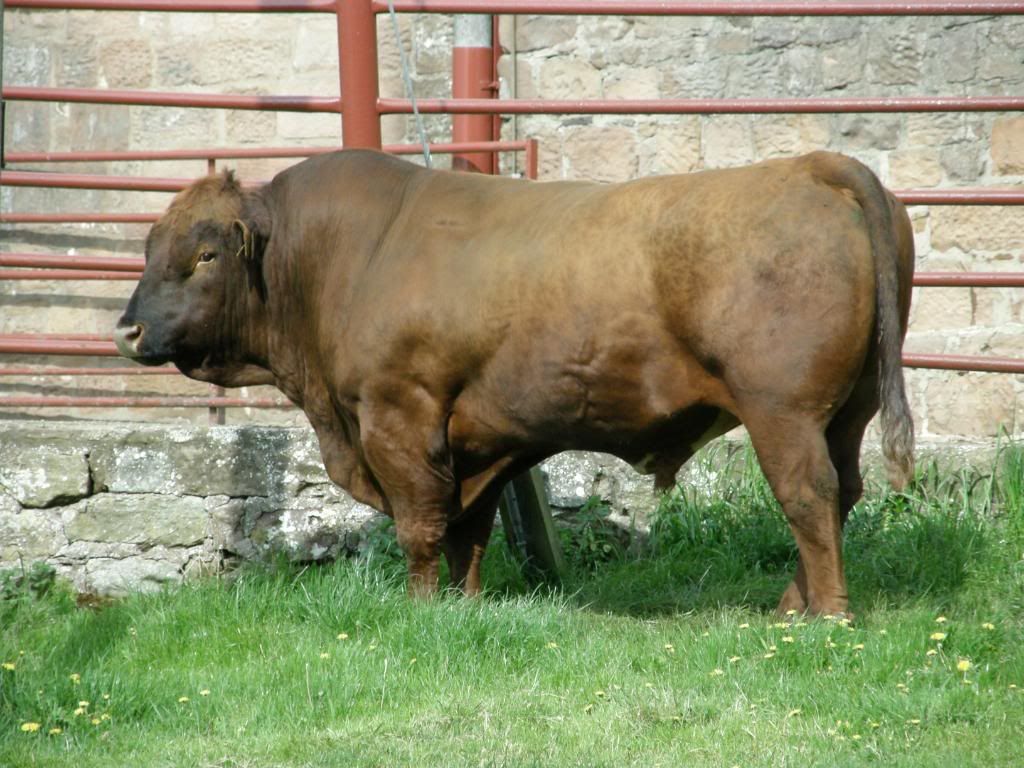
A nice bit of beef
I passed a large farm at West and East Horton, a massive enterprise with much cattle and mooing in the air, and it must have been here a long time as the old ridge and furrow patterns are still in some of the fields. There was a huge prize bull grazing away in a field with muscles nearly as big as my calves – he was a big boy! I was still walking on small roads and making good time – it would have been hard not to, and as I crested a rise close by Town Law it was all gentle undulations downhill to Hetton Burn, with only the ridge of Cockenheugh and Greensheen Hill between me and the North Sea.
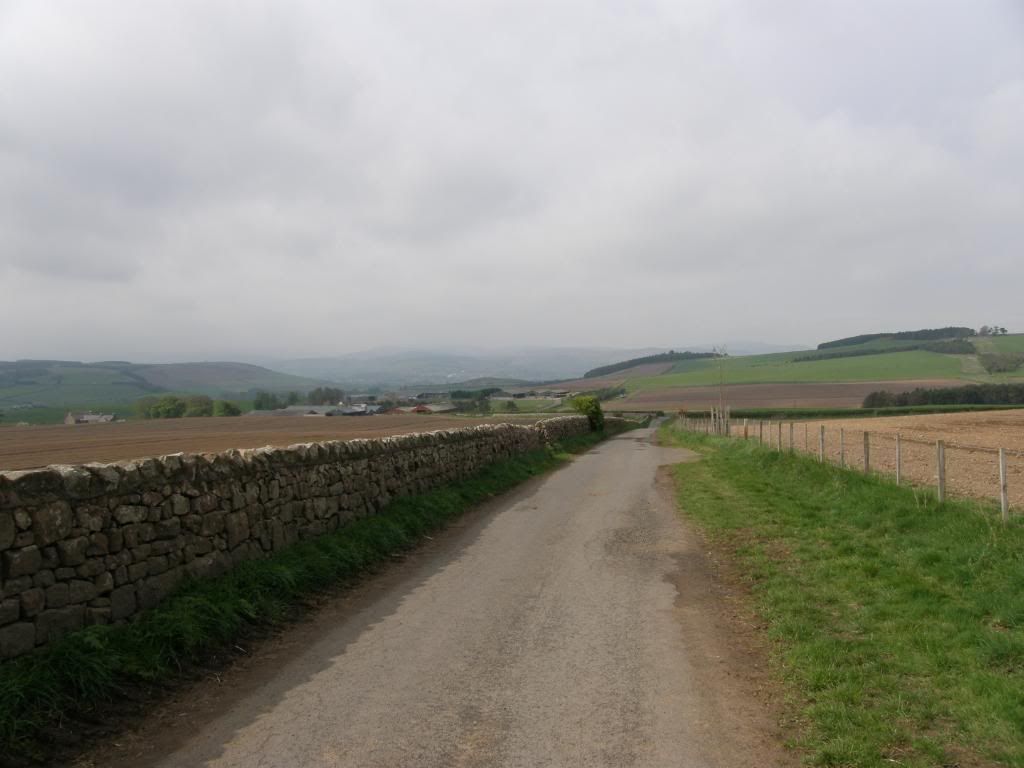
A last look at Buttony and beyond to the Cheviots
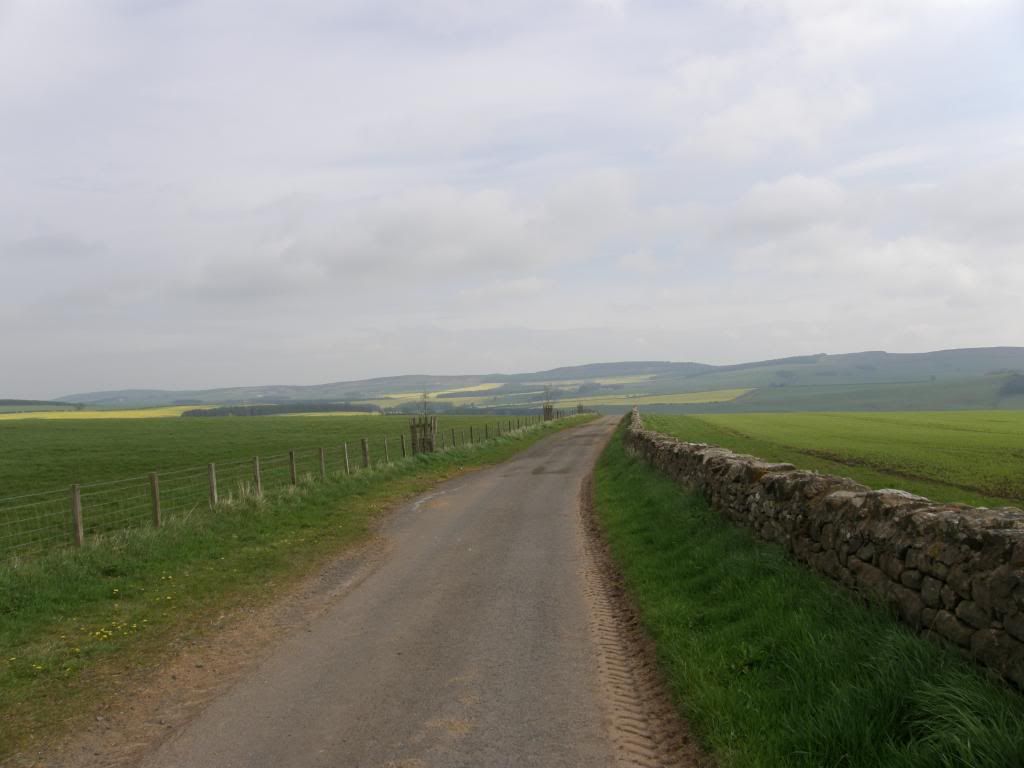
And the view down and up to the final ridge before the sea

The WW2 pillbox with its turf hat
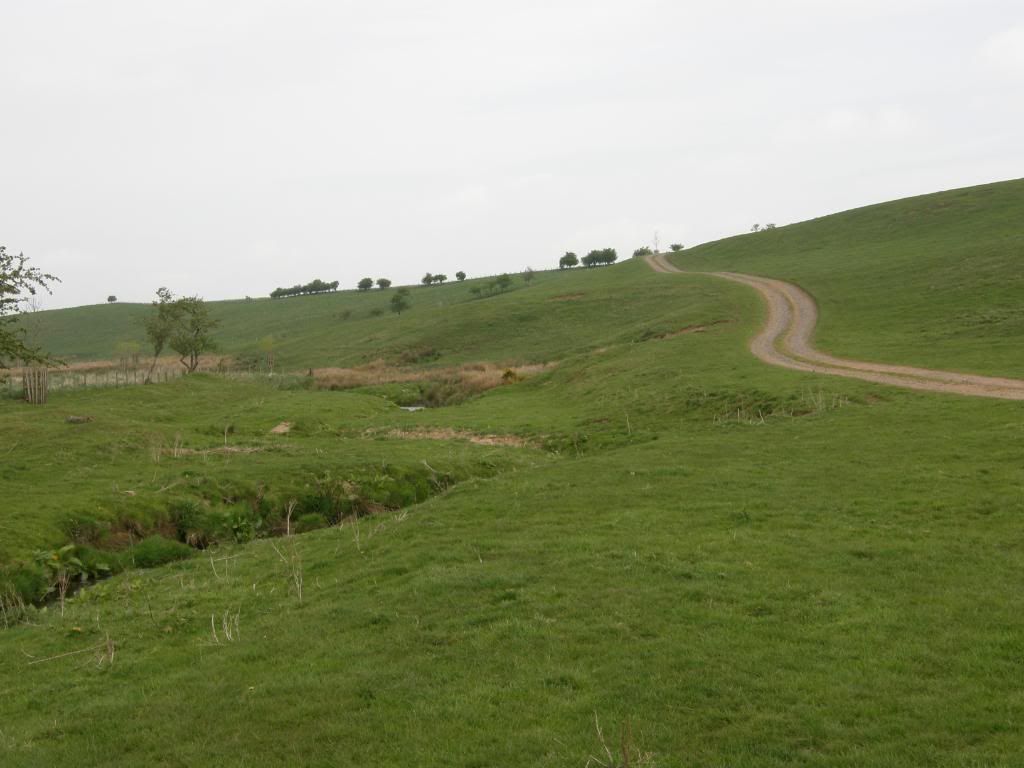
The start of the walk up to towards St Cuthbert’s Cave
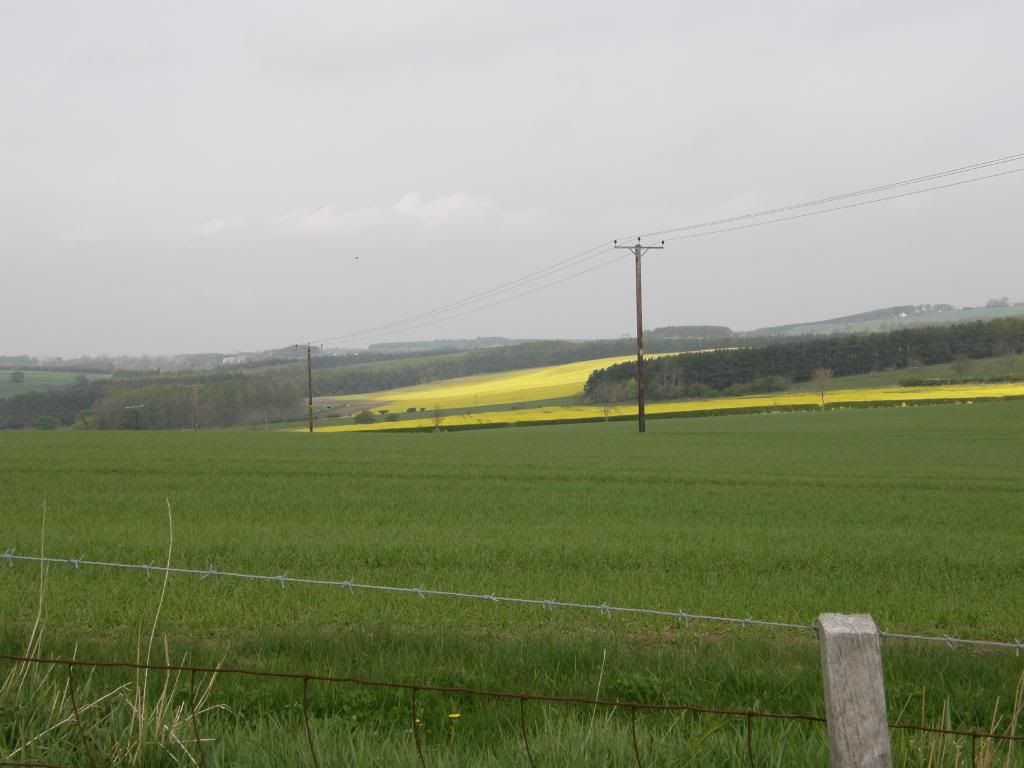
The way passed through many fields today

Plenty of ridge and furrow field patterns
It was a lovely rural scene looking around over the farmland, a tapestry of Yellow Rape Seed Oil crops intermixed with ploughed fields and of course lots of grazing land. I passed by another WW2 pill box set into the side of the farm track, with lookout slots dotted into the concrete all the way around. Like the one up on Buttony it had a nice turf helmet to keep warm in the winter. As I crossed over the small river at the bottom of the hill I took care not to disturb the newborn calves too much and they weren’t interested in me thankfully. There was more ridge and furrow in the surrounding fields and looking up I could see my next point of interest – Bert’s cave. As I steadily moved along the edge of field paths, I could see the rain clouds gathering behind me over the Cheviots – ha ha – I was nice and dry, and quite snug in my merino top thank you. I reached St Cuthbert’s Cave soon enough which is sited just below the crest of a ridge, and it is quite prominent on the hillside. It is surrounded by plantation trees, although they have been thinned out around the location. The cave itself is a natural feature where the softer sandstone has been eroded out, leaving a pillar of sandstone holding up the roof of the cave. I noticed that they have done some cementing around the base of this pillar to stop further wear and tear. It was cold and damp in the interior and the back wall has been filled with much graffiti over the years, alas Bert was ‘ere was not among them. It would make you stiff if you had to stay overnight here, but in Bert’s case he already was anyway.

More rural scenes

St Cuthbert’s Cave high up on the ridge amongst the trees

More fields of Rapeseed
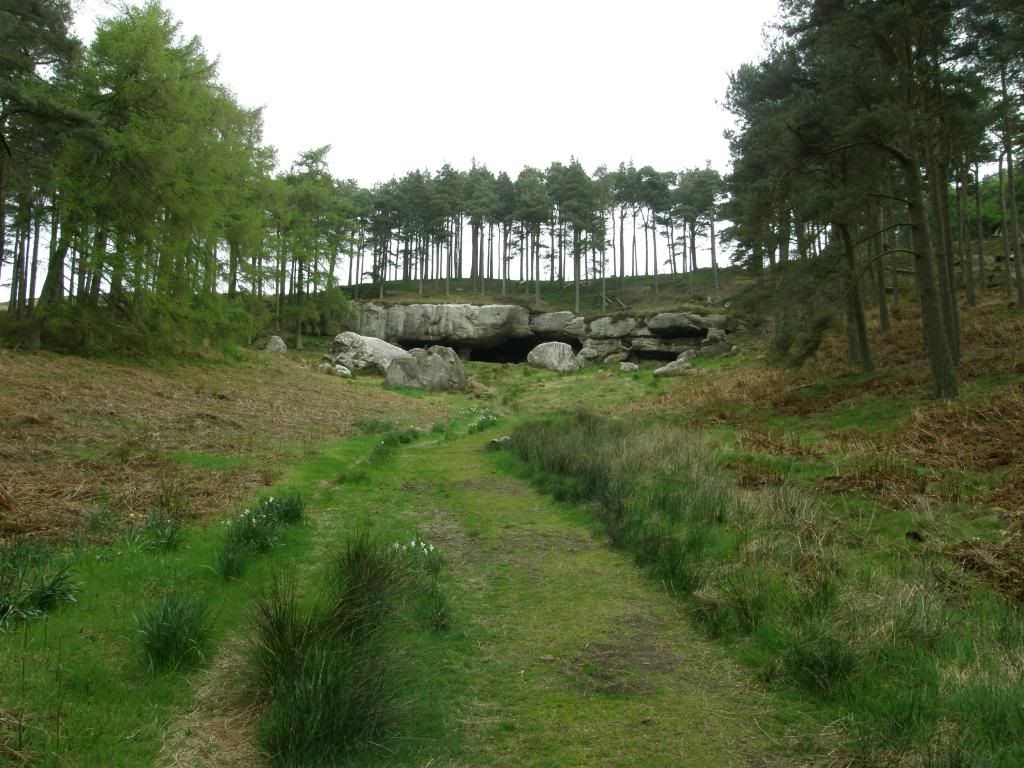
Bert’s pad
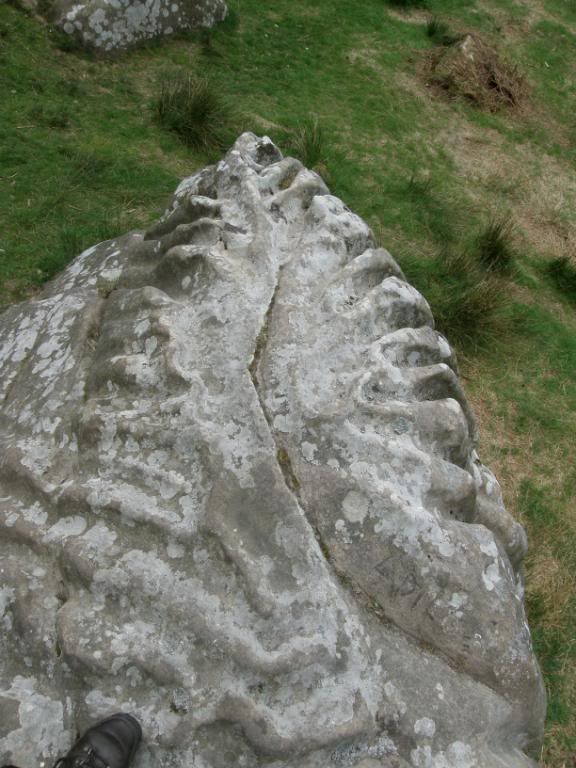
Looks like something out of alien

Only a small stump holding up a big lump

The convoluted bedding at the top of the ridge – perfect for Hula Hoops
There were also some interesting boulders outside of the cave with some showing signs of erosion that are very similar to the limestone pavements of Malham inYorkshire. The sandstone here is probably calcareous and was worn away by dissolution of the limey bits – probably. There was also some remembrance carved into one of the boulders for a ‘Jennifer Saunders’ – she must have loved the area. Up on the crest of the ridge at Greensheen Hill there is lots of convoluted bedding in the sandstone and it provide a pleasant diversion as I sat out of the wind and had a lunch break. I knew the sea was beckoning behind my back but I had a little rest looking back to where I had walked before setting out for the sea. Once I was suitably refreshed I crested the rise and there it was in the distance, a sticky up lump out at sea – Lindisfarne Castle. The route from here was generally to the North but it did zigzag around for a little, and after crossing some fields I came to some very disturbed ground. It looked like a series of small pits all in a jumble and these must be the old coal workings mentioned on the explorer maps. Each of the pits seems to have a tree growing out of them – must be the rainwater that collects in the hollows? The route continues into a managed forest, which provided good paths in the main and some interest unlike the usual pine plantations, although it was a little tight through some of the gorse patches.

Farewell Wooler and beyond
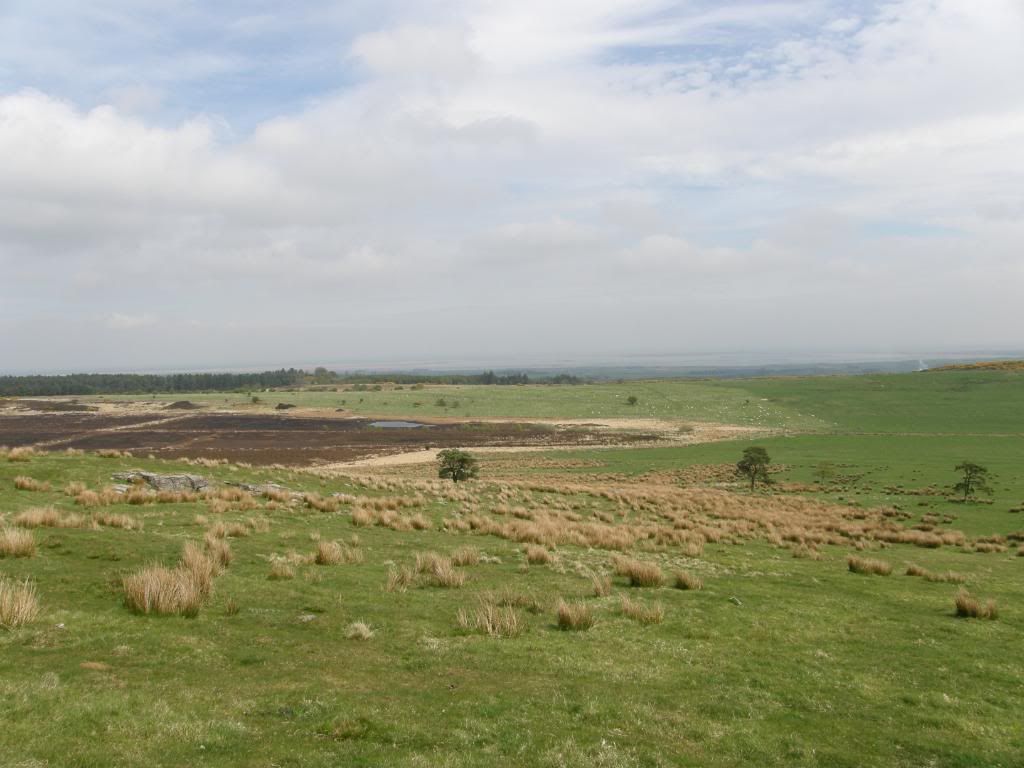
And on the other side Holy Island appears faintly in the distance
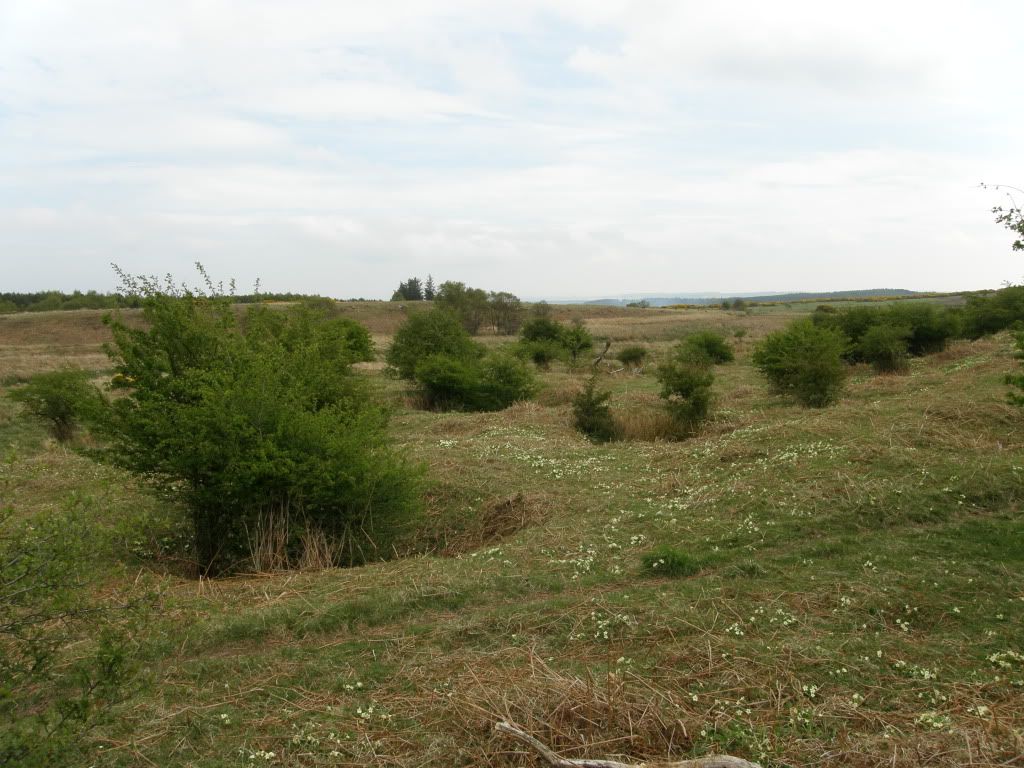
The old coal holes
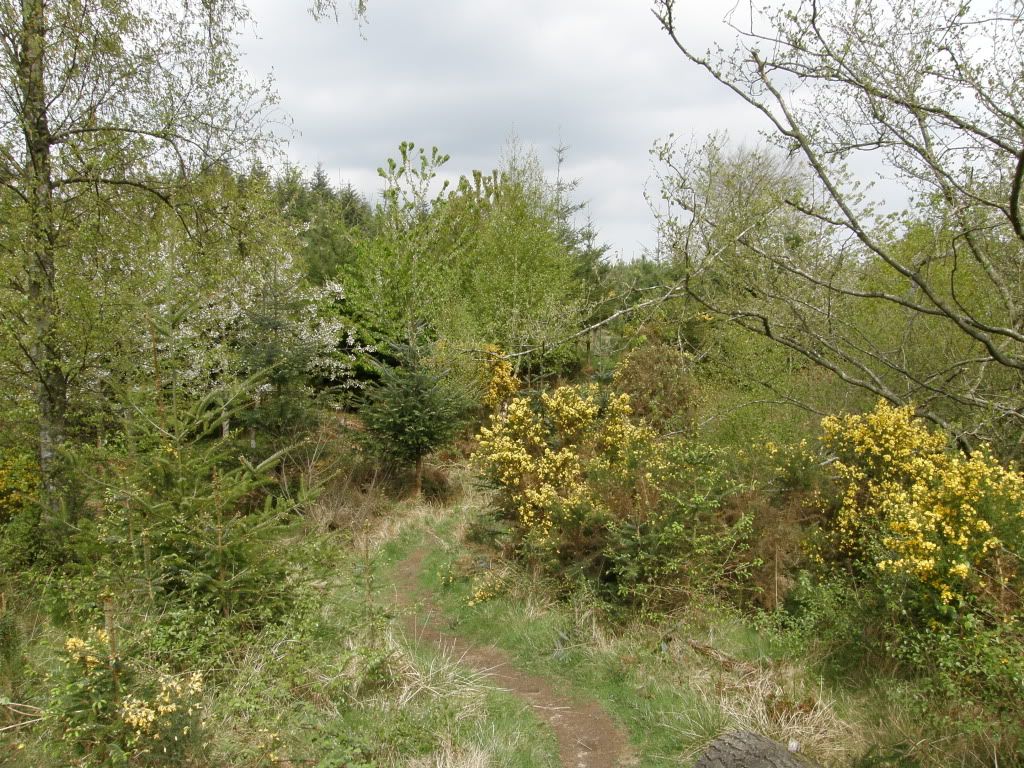
Deep in the managed woods

Getting nearer to my destination
Once I was out of Shiellow Woods, the path skirted around the edges and passes by some old earthwork enclosures at Herd’s House. Once out of the woods it was now more road work as the views opened up towards the coast – I couldn’t smell the sea but I could see the sea. I took a little detour around an old farmstead at East Kyloe, and luckily there was some old field patterns and the remains of an old tower to look at – this was a small error of judgement on my part, as I wasn’t paying attention to the waymarkers, and it added on an extra ½ mile or so. I plodded on along the road towards Fenwick and could hear the roar of the A1 occasionally, so I practised a little run lest I got caught in the traffic – not so easy with walking boots on and weary legs. But I made it across OK, and if you are up this way make sure you are in the clear because the traffic does whizz along here. Shortly after crossing over the A1 I passed by Fenwick Granary, an old farm spread with some grand buildings which is falling into a state of dilapidation, and then onwards up a small rise which led me to views over to Holy Island and Lindisfarne Castle. It wasn’t far now to the coast and the start of the causeway and my pace quickened through the fields down towards the east coast high speed train track. Luckily for me two trains zoomed past me minutes before I got to the track, so I could cross safely in the knowledge that the fast trains had already gone. There is a phone which you should use to call the signalman, and if in doubt you should use it.
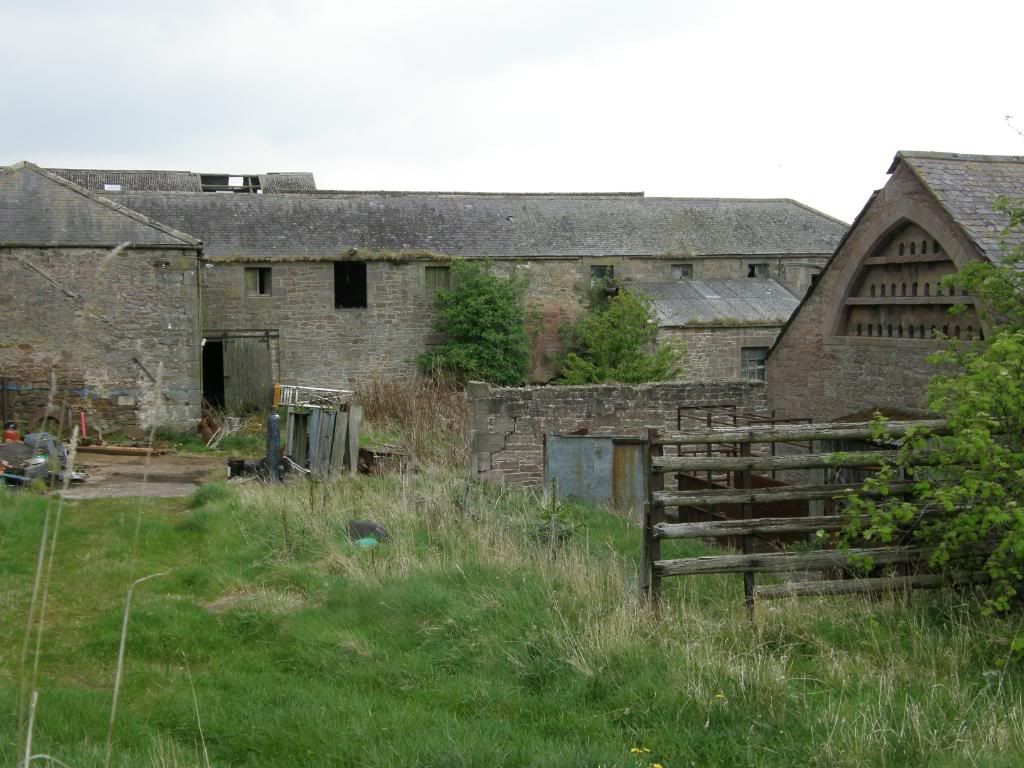
The old Fenwick granary
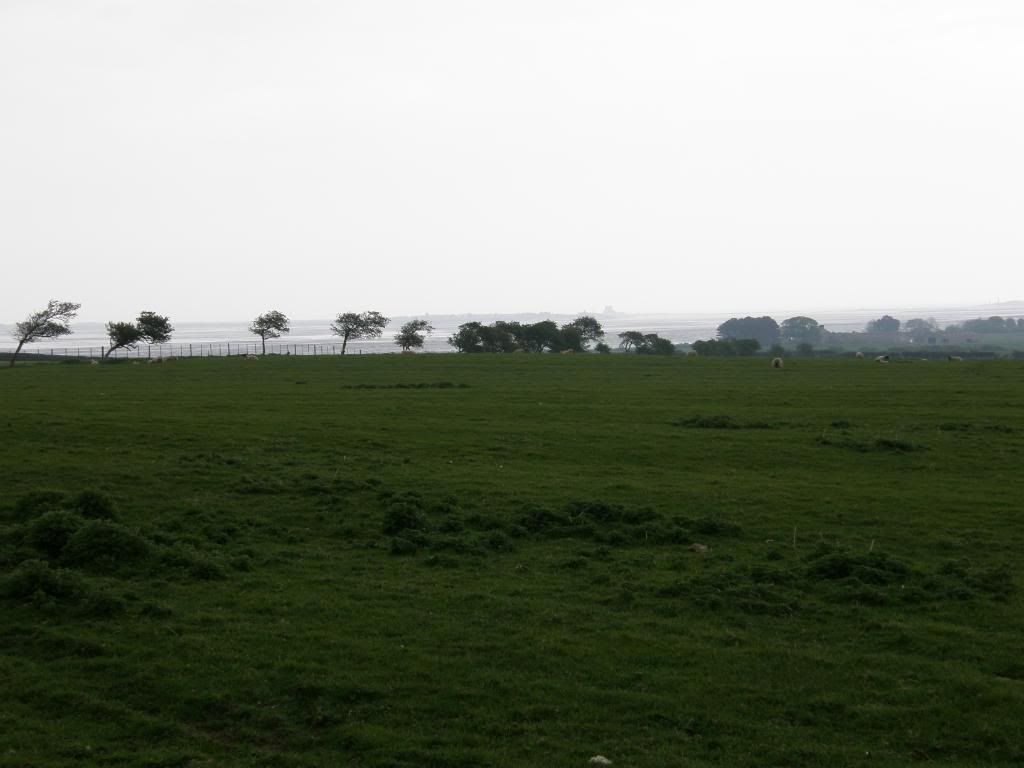
I could see the castle now
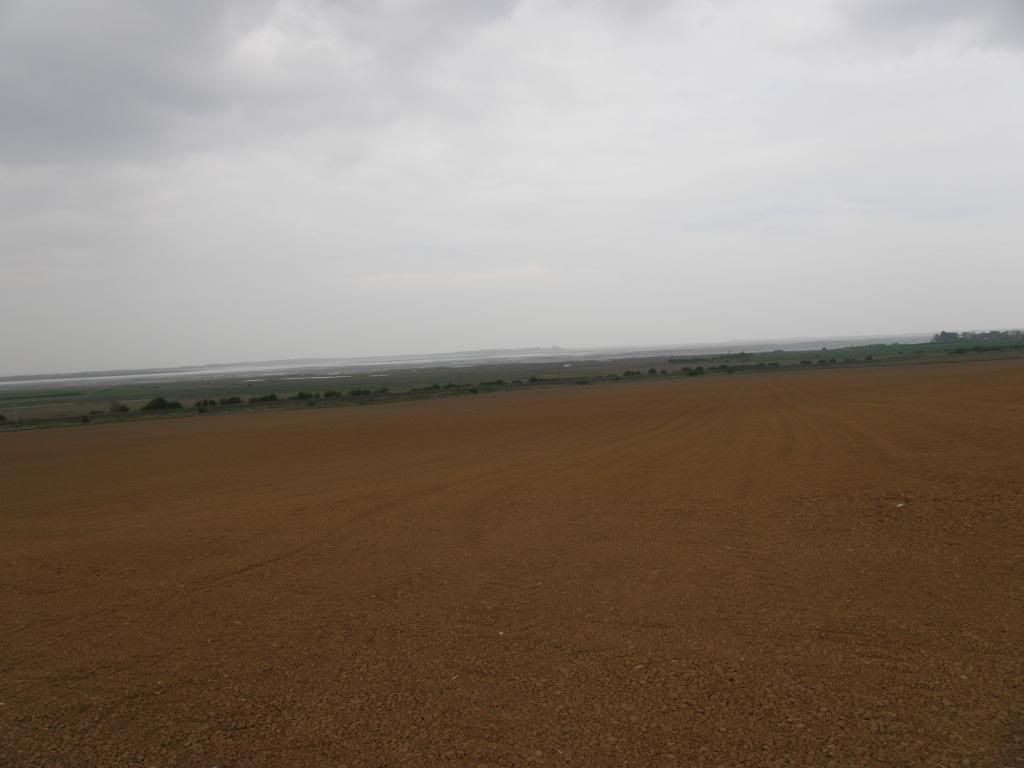
And I could smell the sea at last
The smell of the sea was getting stronger the closer I got and I crossed over a large tidal channel and onto the mud flats / sea marsh. A line of big concrete blocks led to the start of the causeway across to the island, and a big tide table and posters warning of the dangers here. There were lots of people stopping to look at them, with some turning tale and many others going across for a quick glimpse before turning around for the return journey. The line of posts marking the Pilgrims Path didn’t tempt me to dip my feet – too cold and wet. I walked quickly past a refuge and put my head down into the wind, I wouldn’t fancy a night stranded in one of these – cold and wet. The last few miles across the causeway seemed never ending and a succession of cars passed me on their way back to the mainland. But it did end and once I was level with the sand dunes I knew I was OK – I knew was OK anyway as it wasn’t yet 5pm.
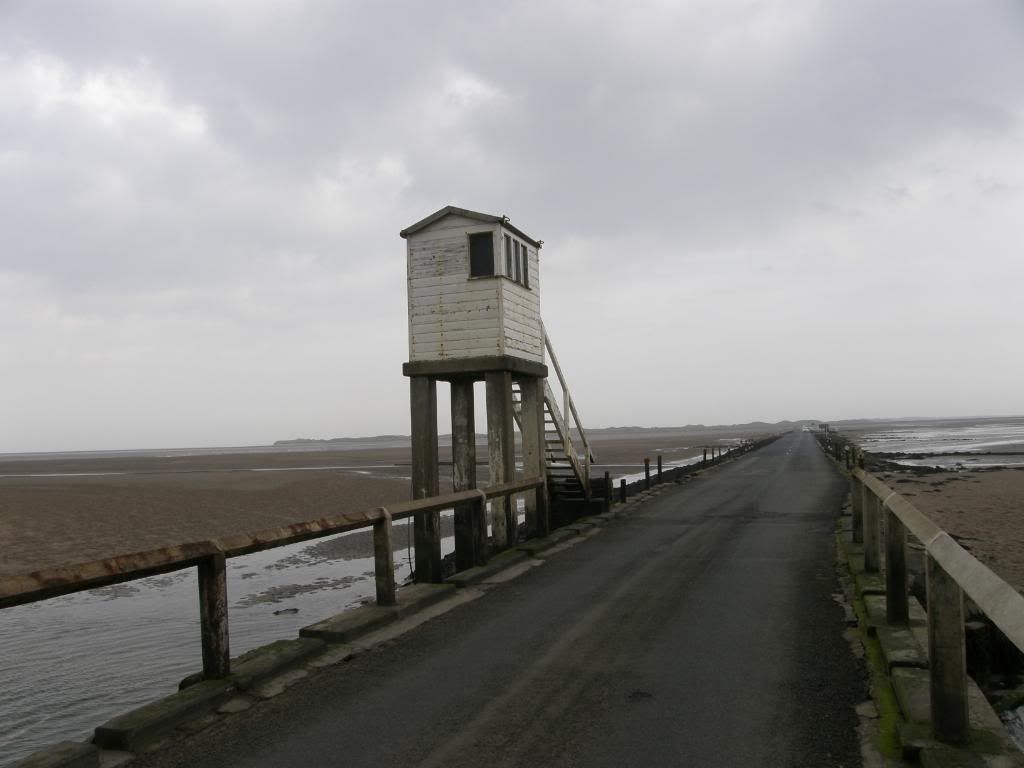
One of the refuge along the tidal part of the road

It was a slog against the wind along here
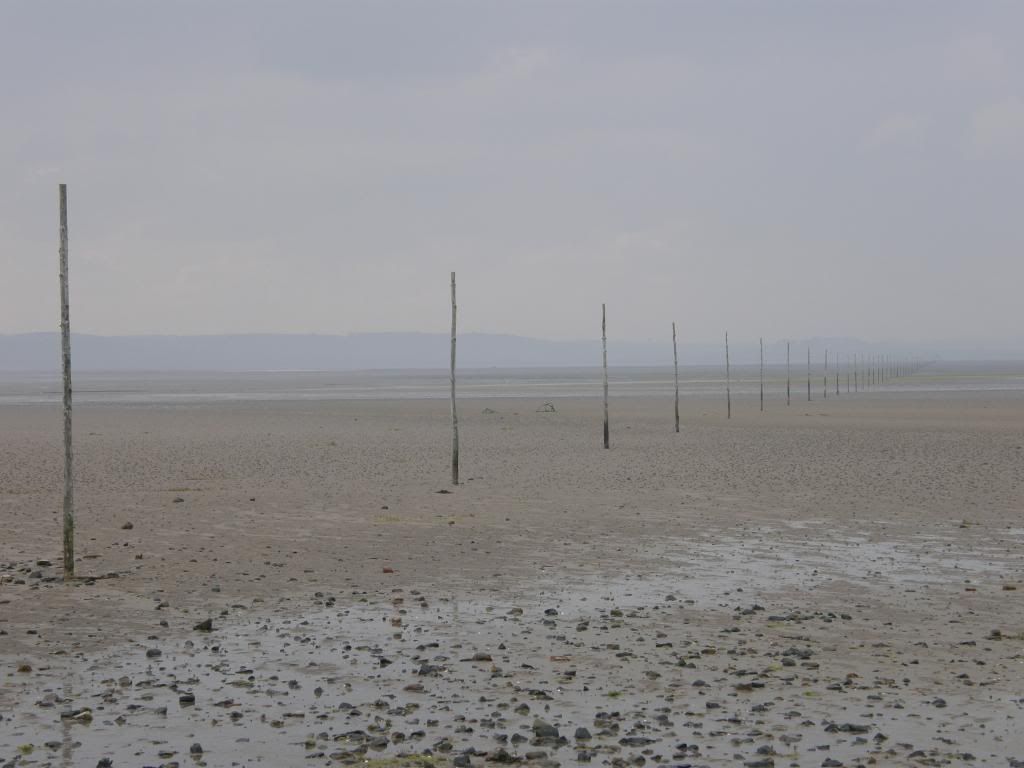
The end of the Pilgrims path

20 miles and running....just
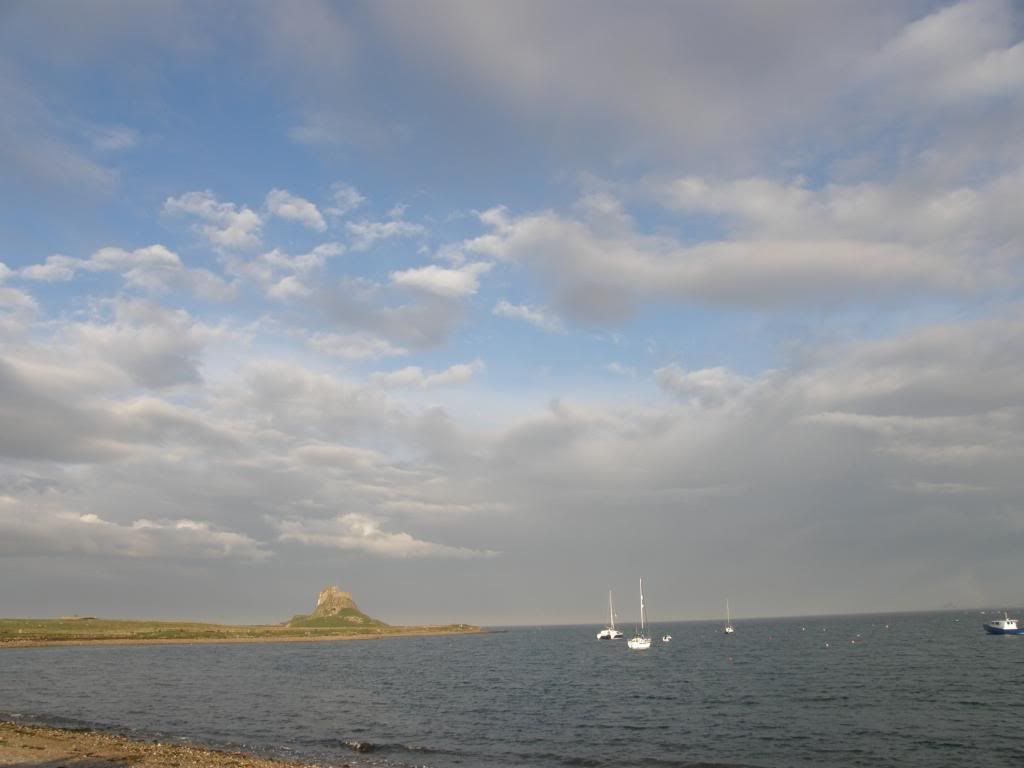
What a wonderful end to my journey

The abbey remains lit by a setting sun
As I walked into town I met my wife walking the other way, and we walked together back to the B&B. After dumping my bag and a quick cup of tea, we set off to end the walk at Lindisfarne Castle in a cold breeze, but with a smile on my face and 20miles on my GPS – a fitting end to a great little walk. We arrived at the castle just in time for a look around and as we stood in one of the rooms the local NT warden said to me "this is the Ship Room". Well I am a little hard of hearing at times but I didn’t think it was that bad. Walking back to the B&B we saw some Sand Martins at the side of the path picking up mud for nest building, and after a quick shower I walked back around to take some pictures of the castle in the setting sun – there was a healthy glow about the place – but enough about me the castle didn’t look bad either. Brilliant.



































